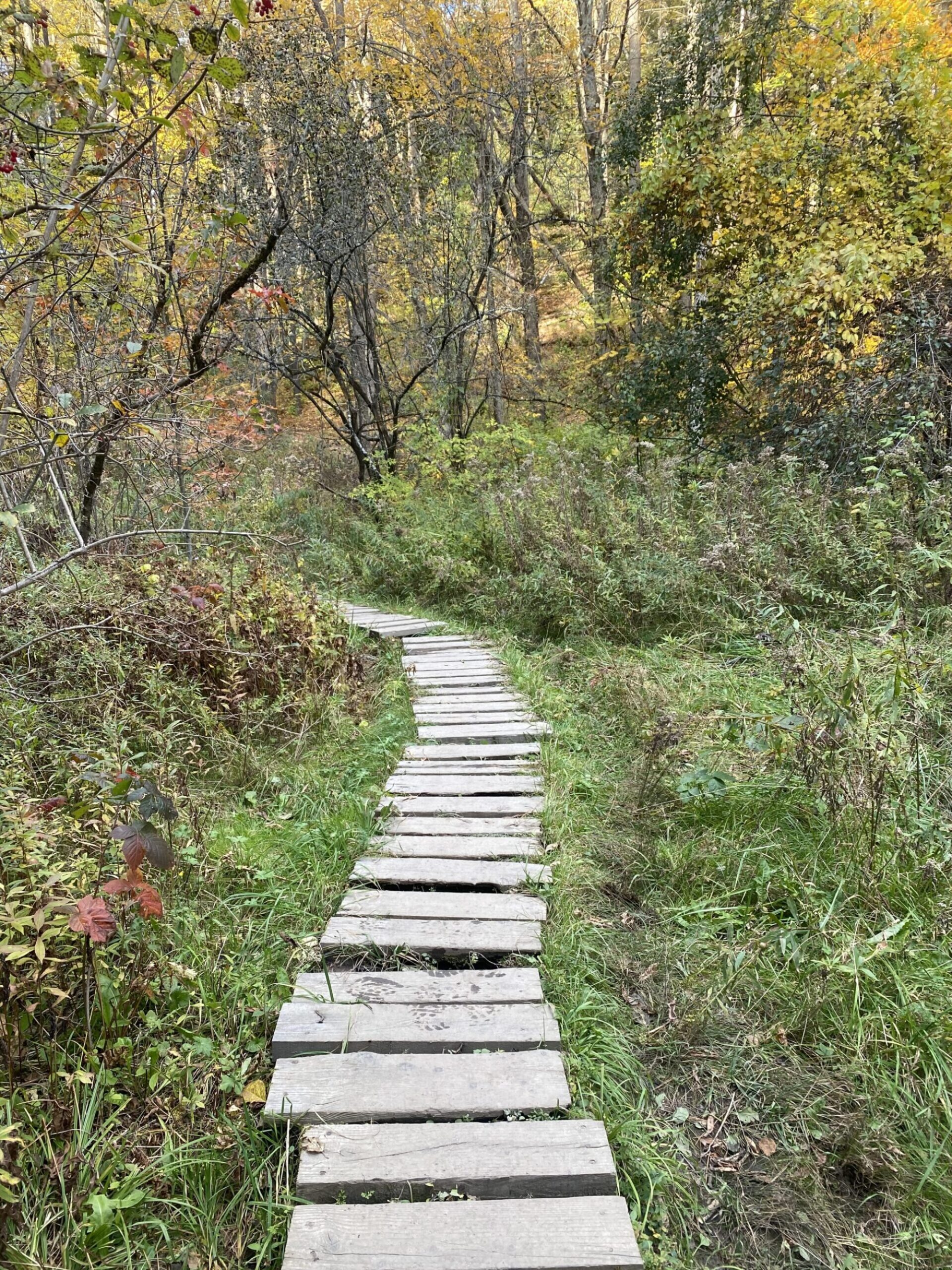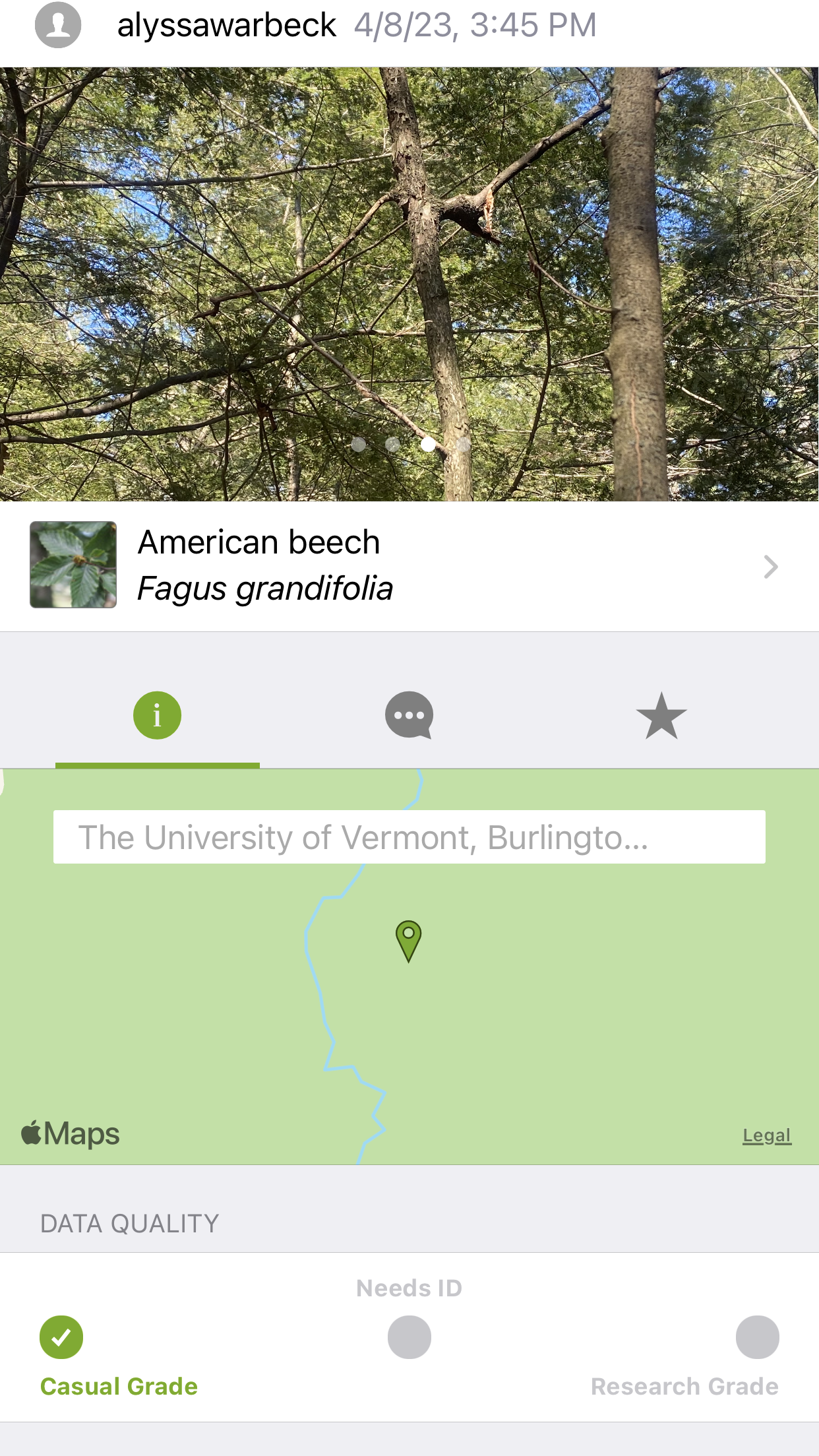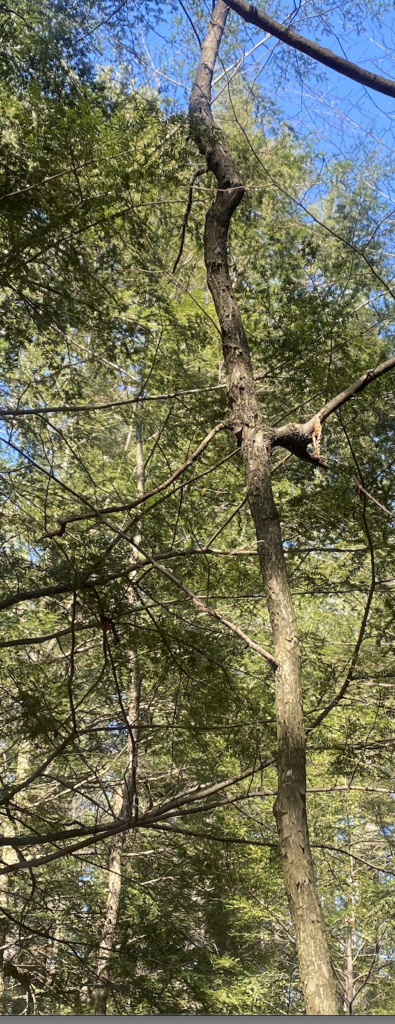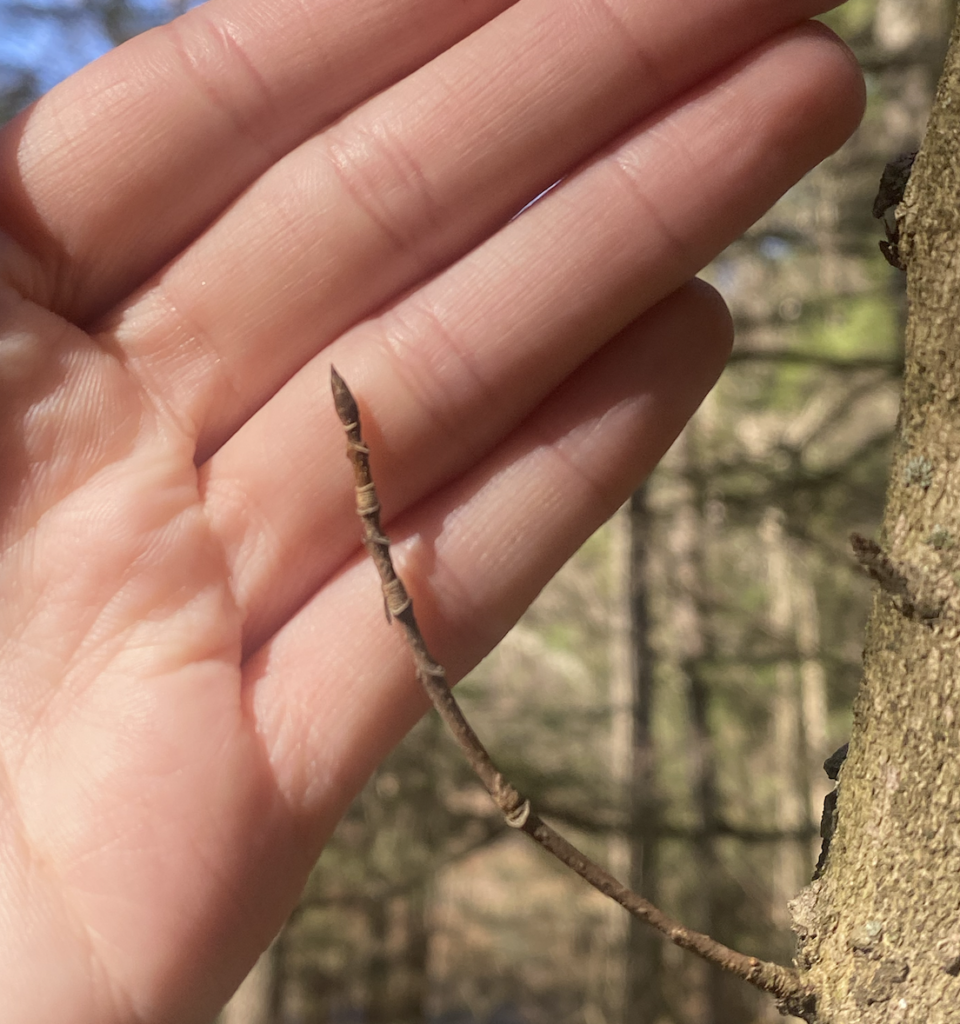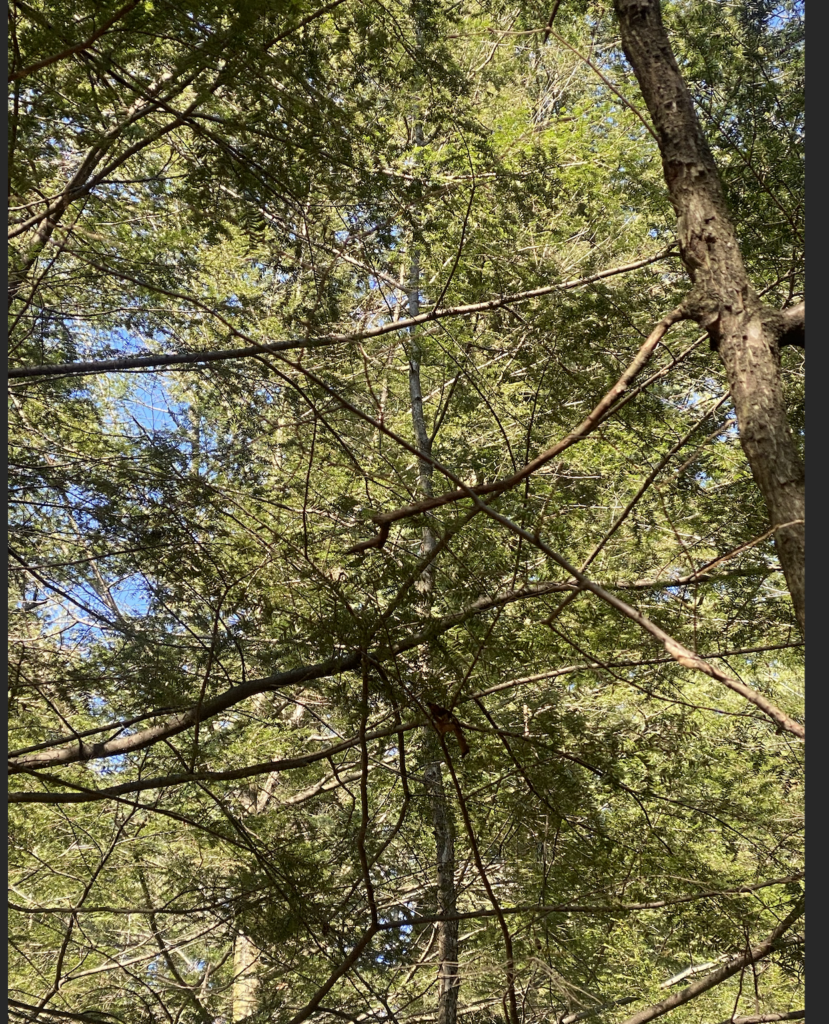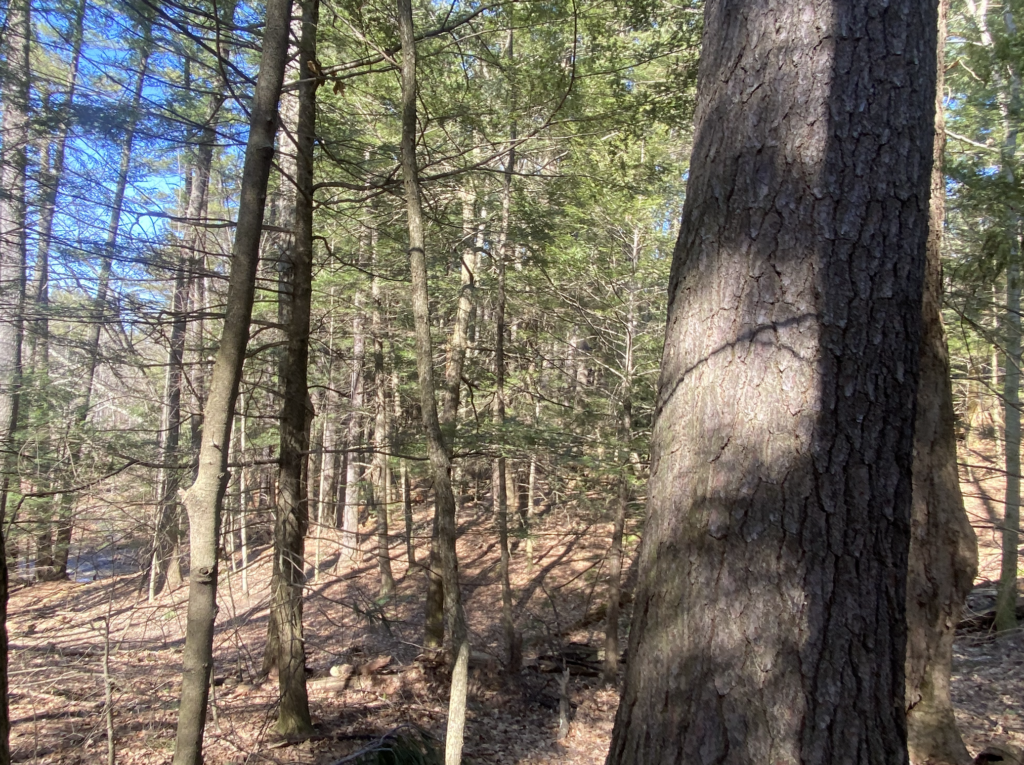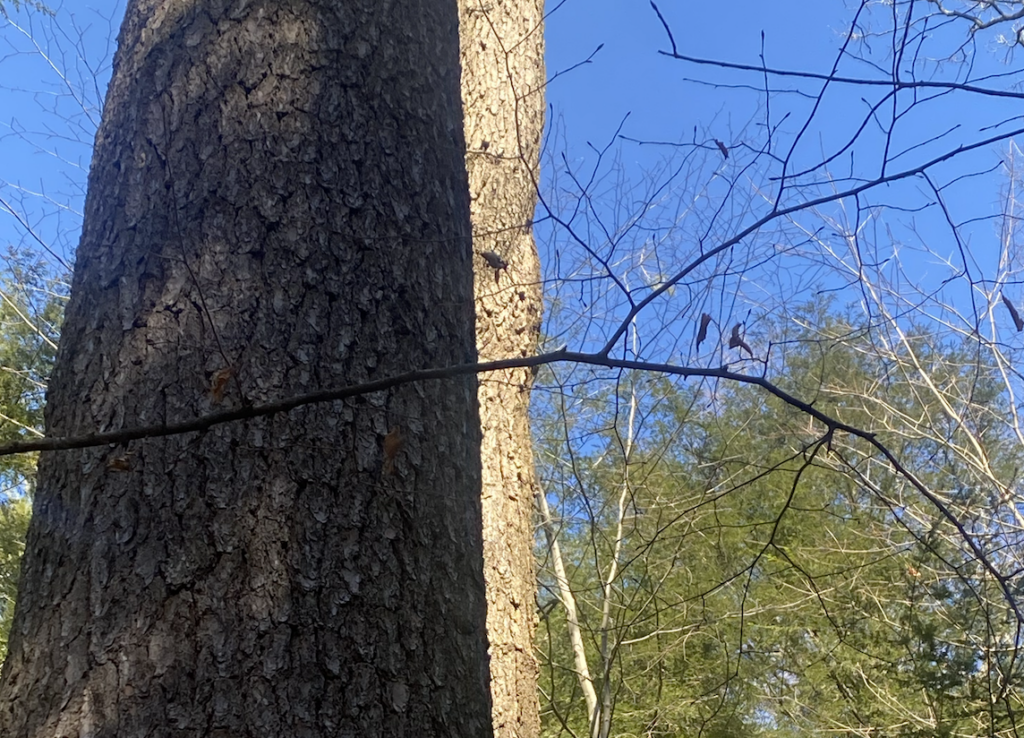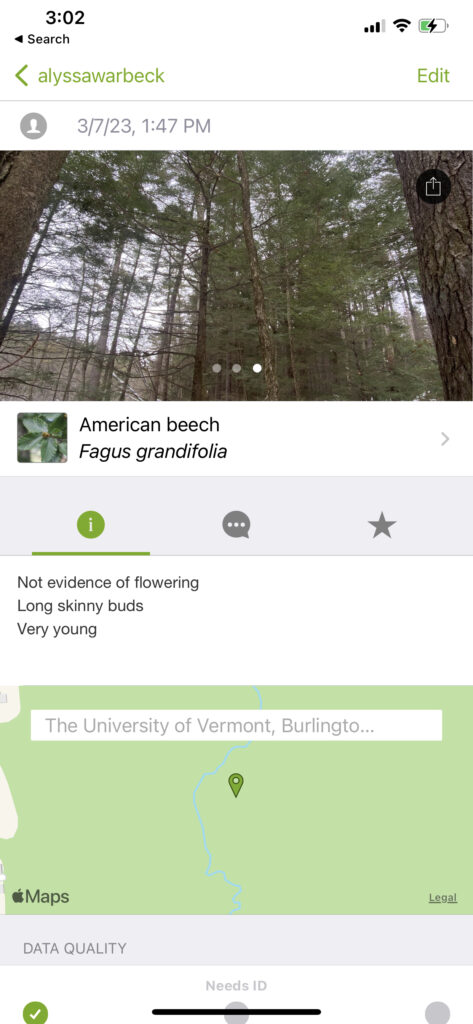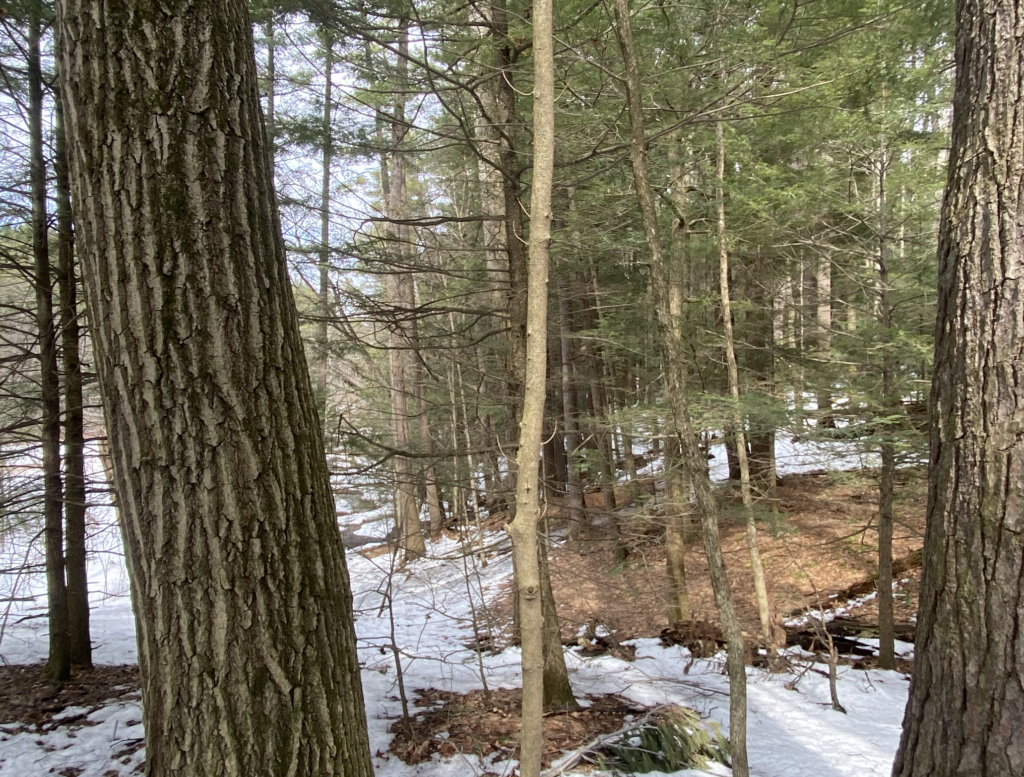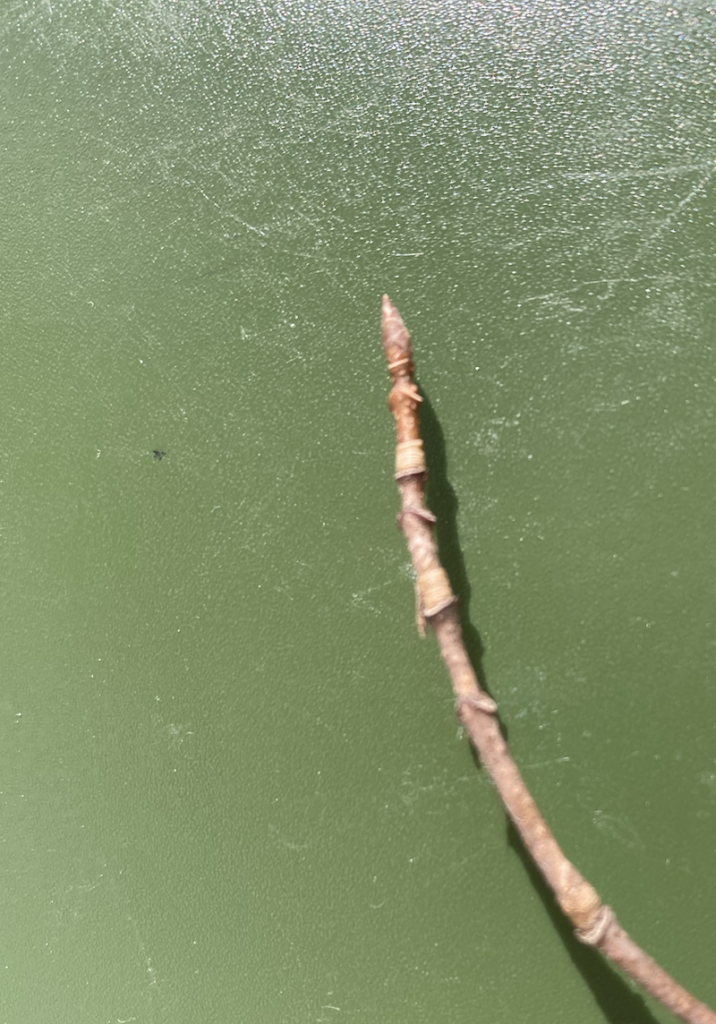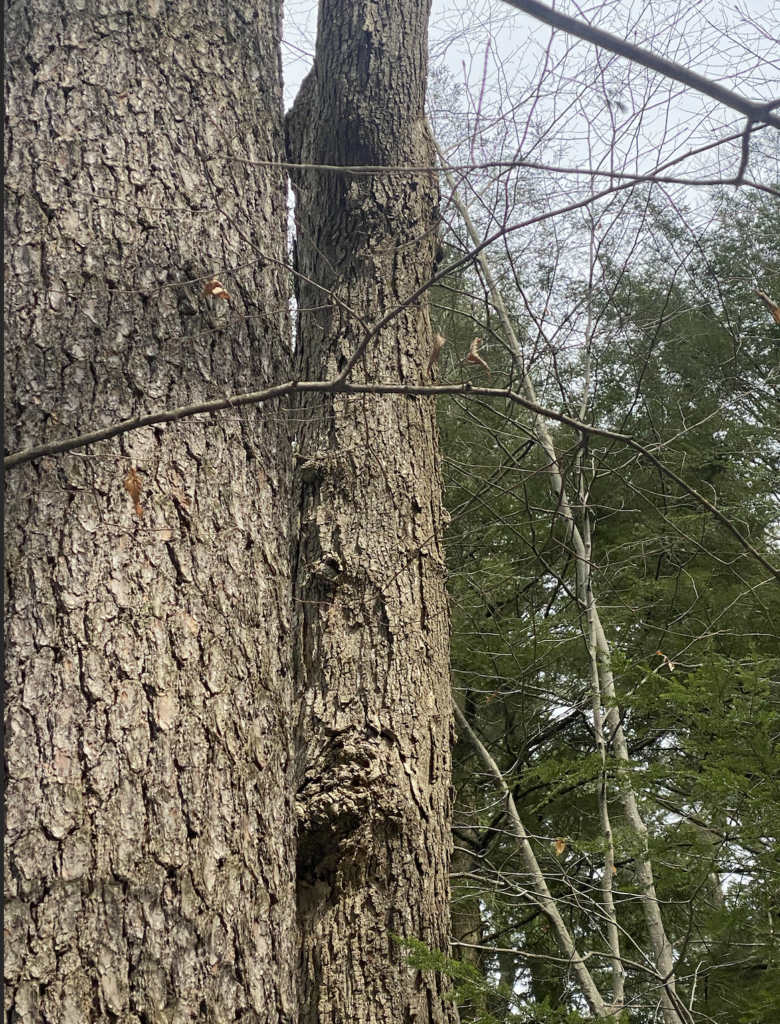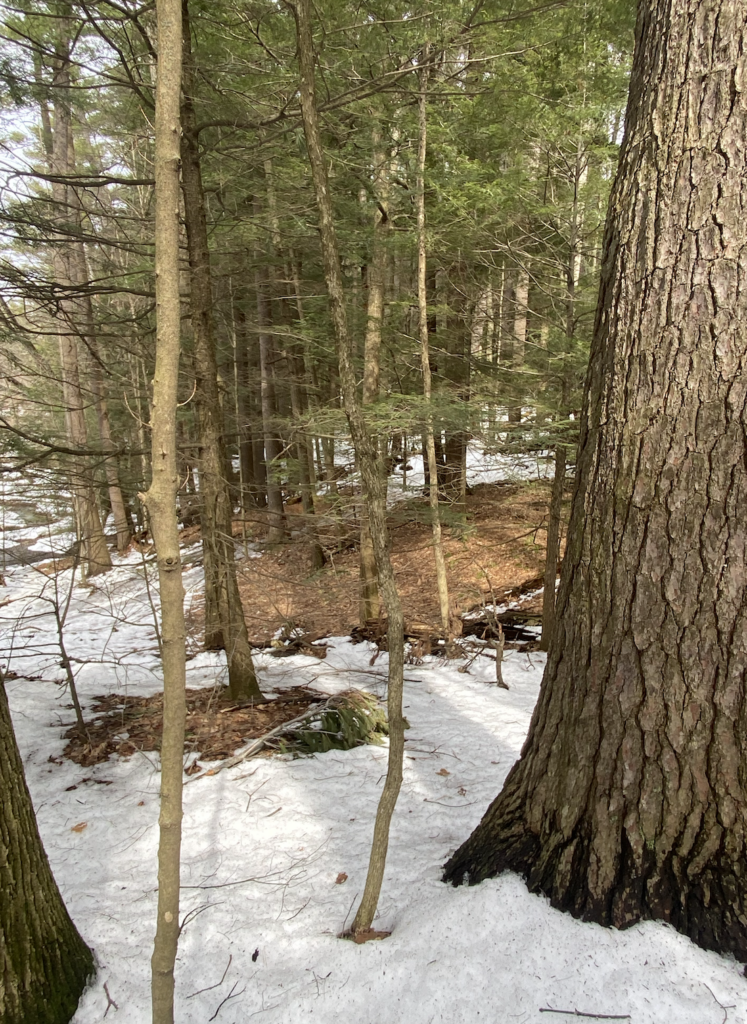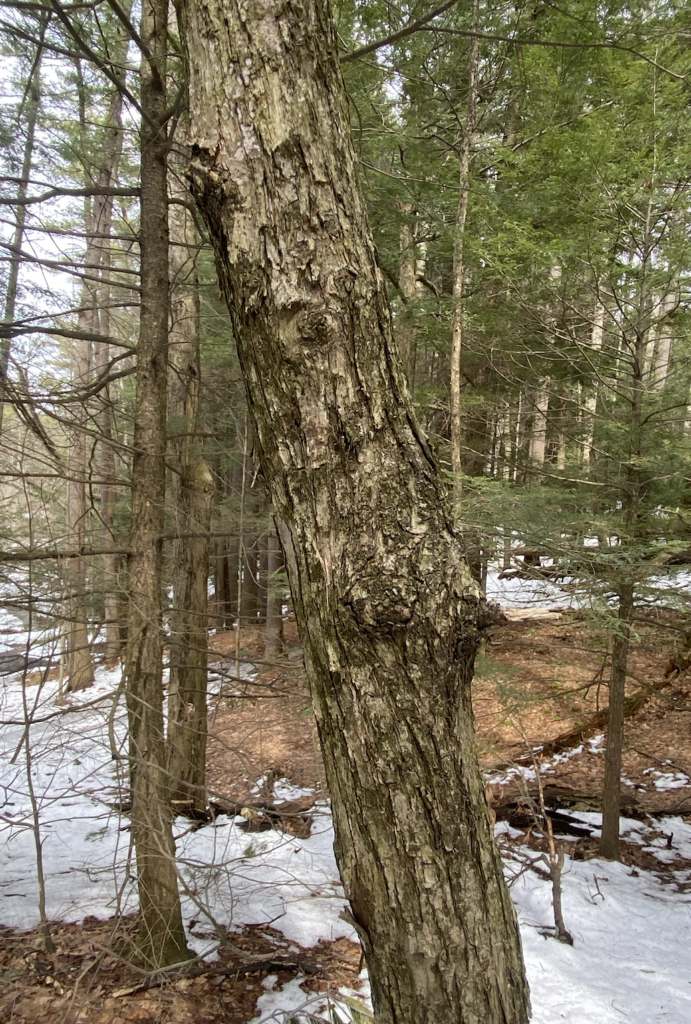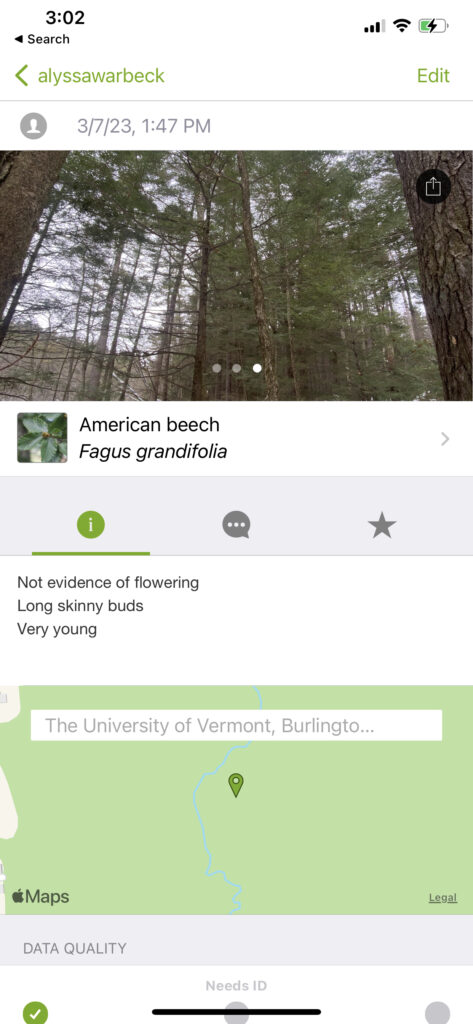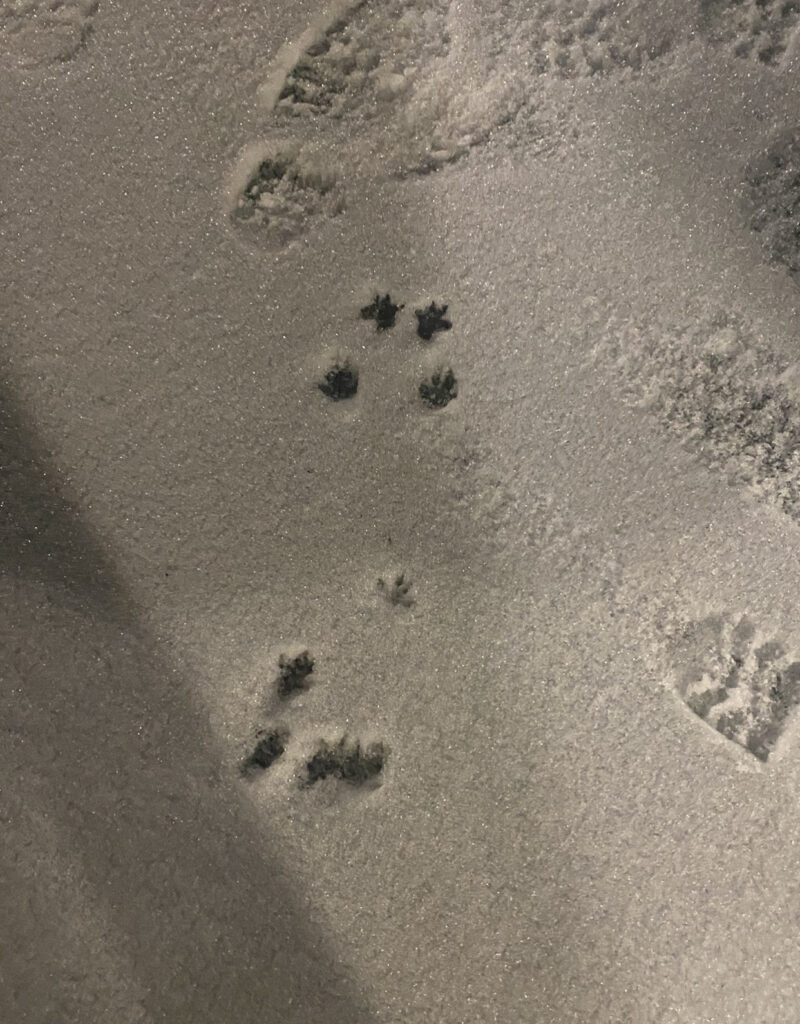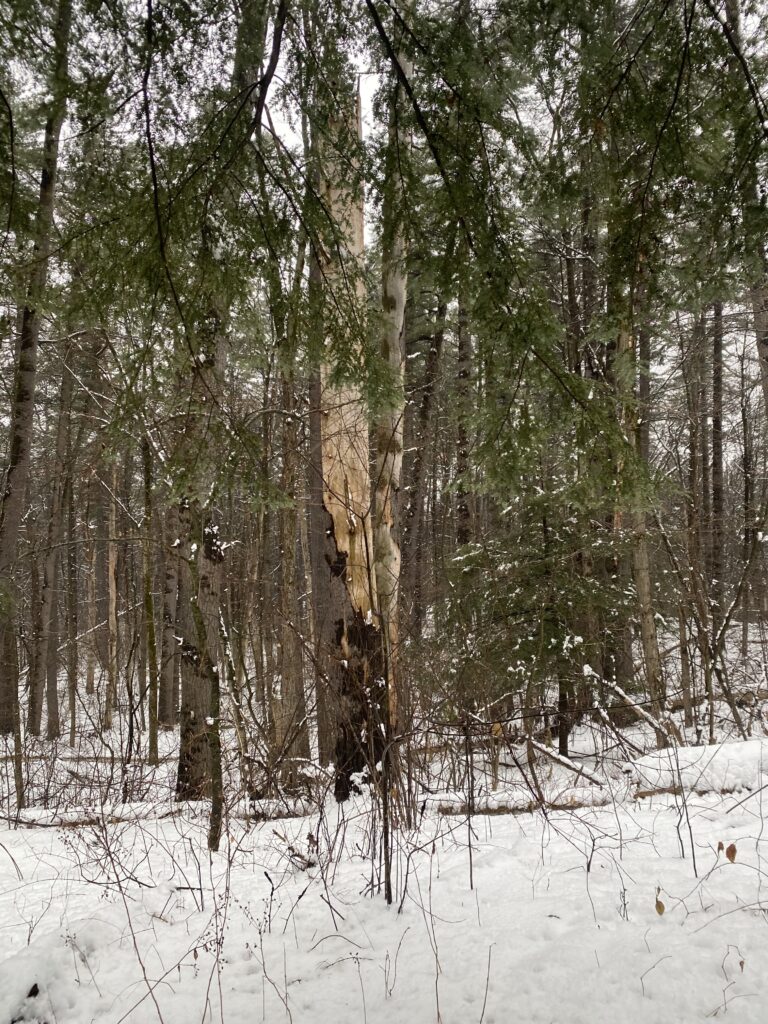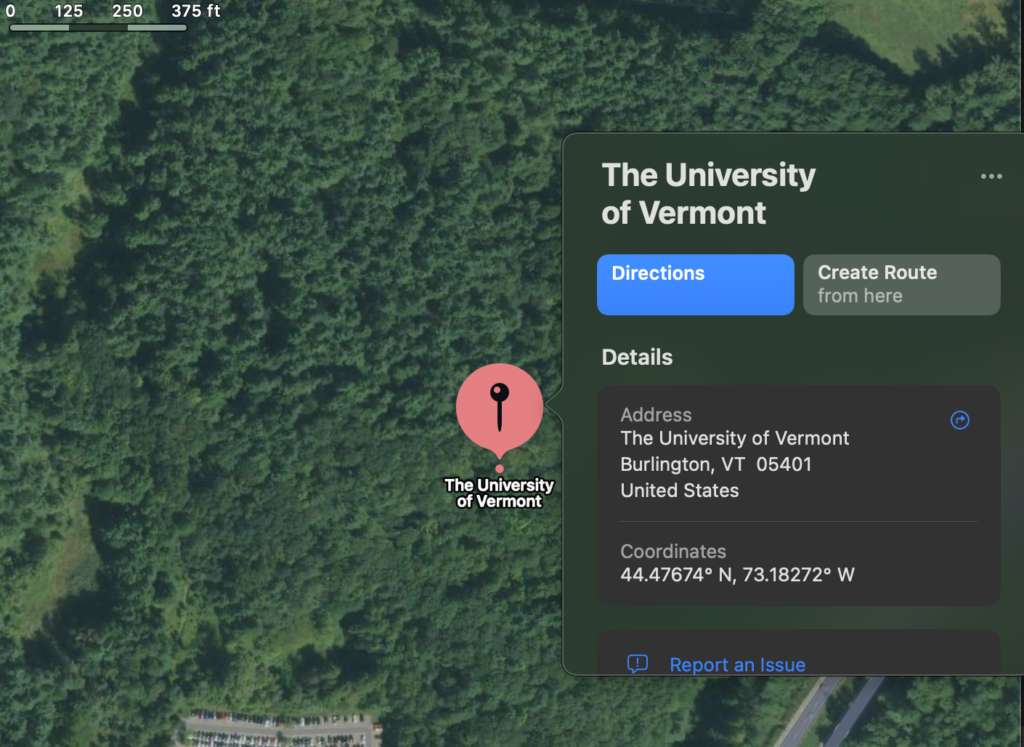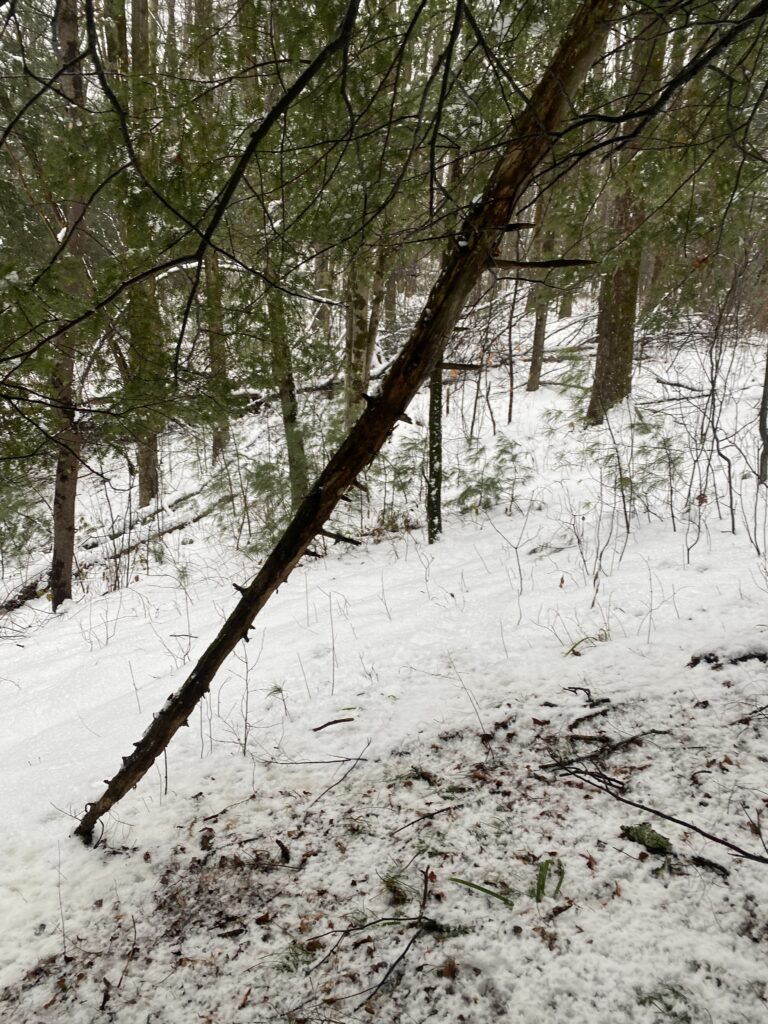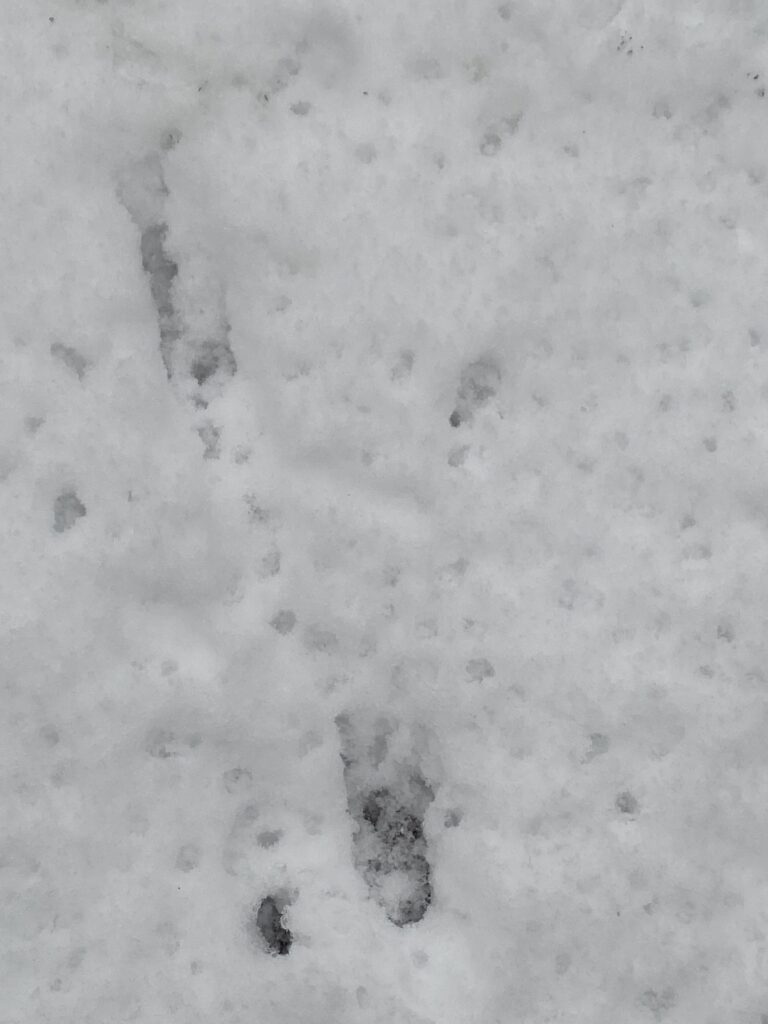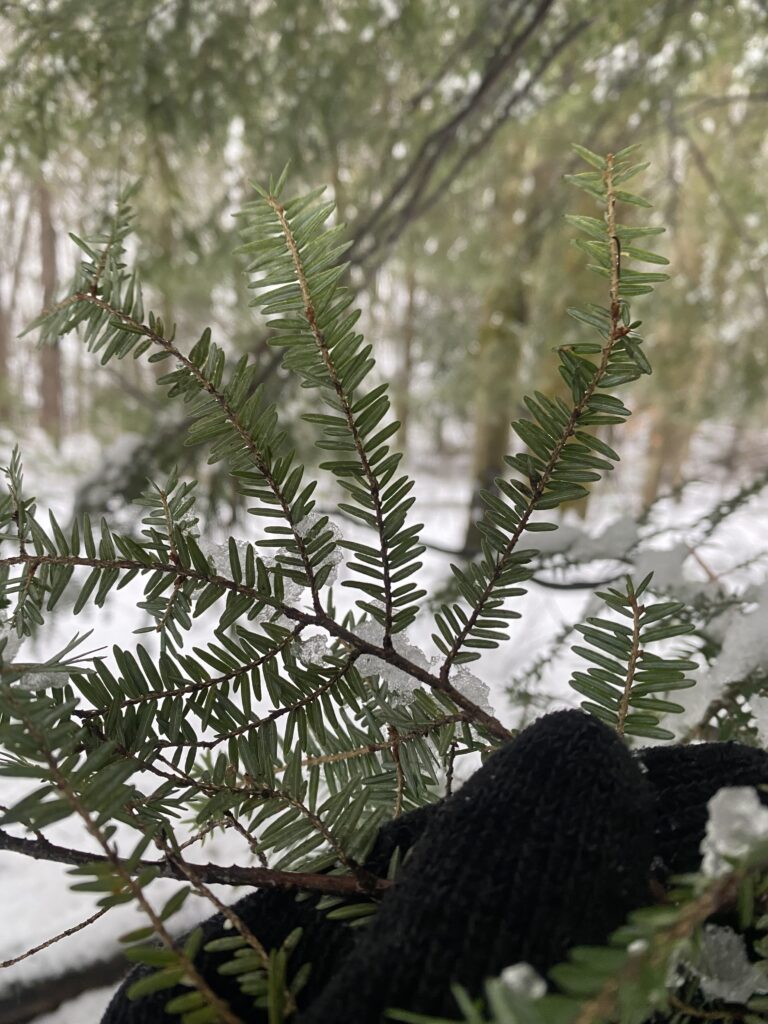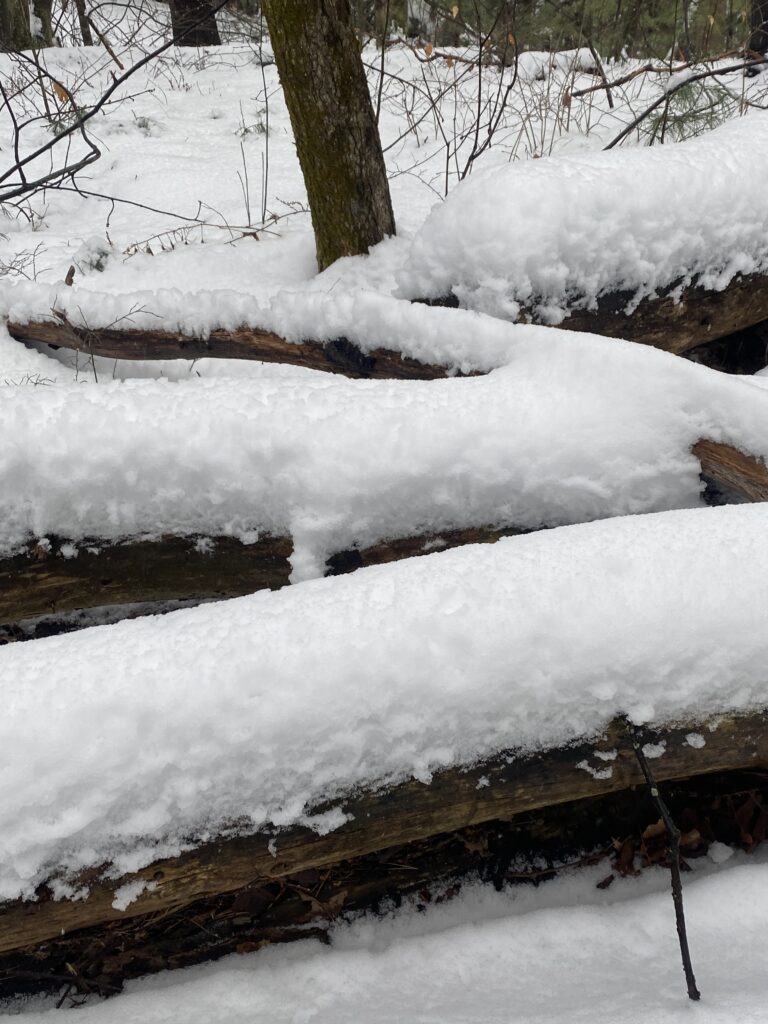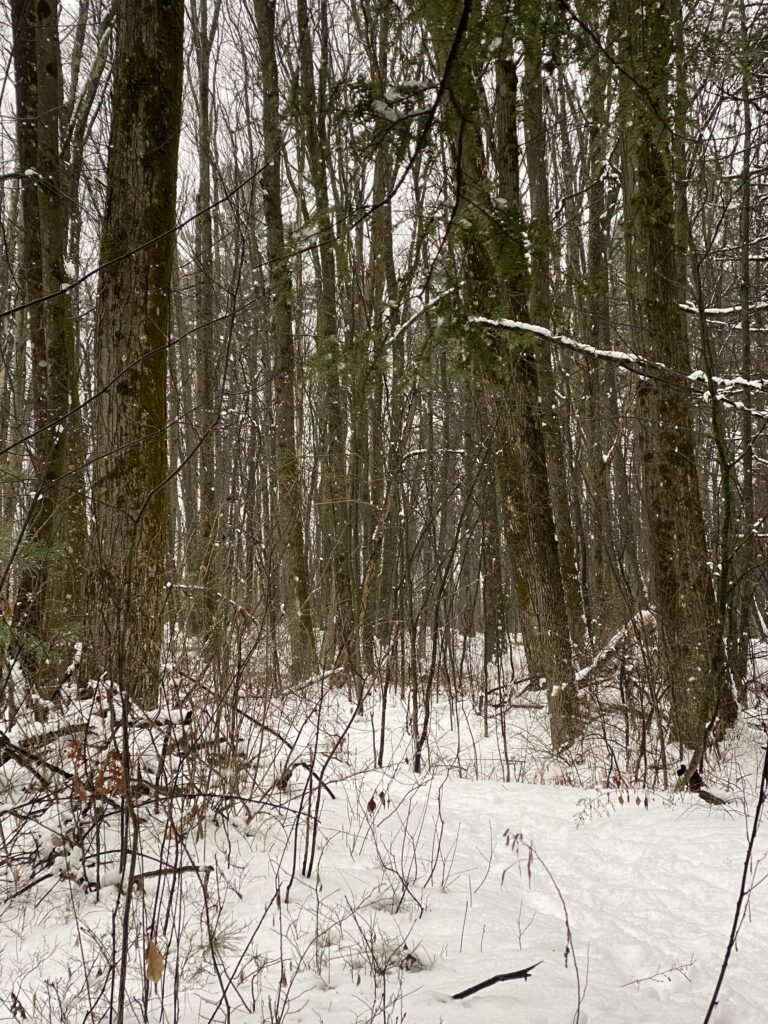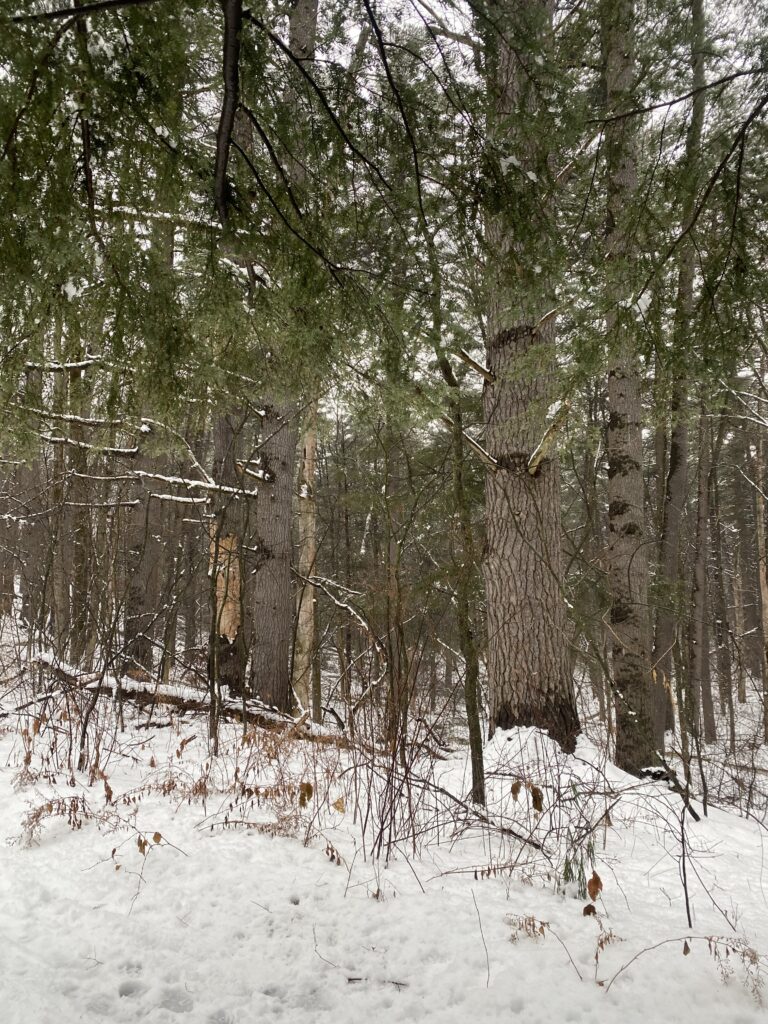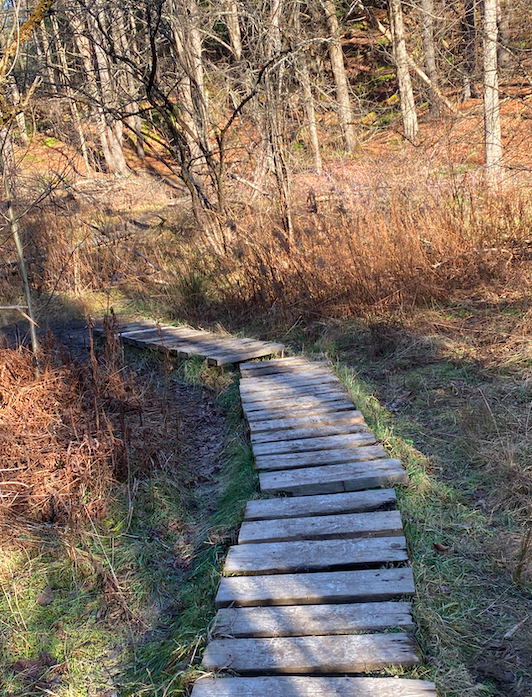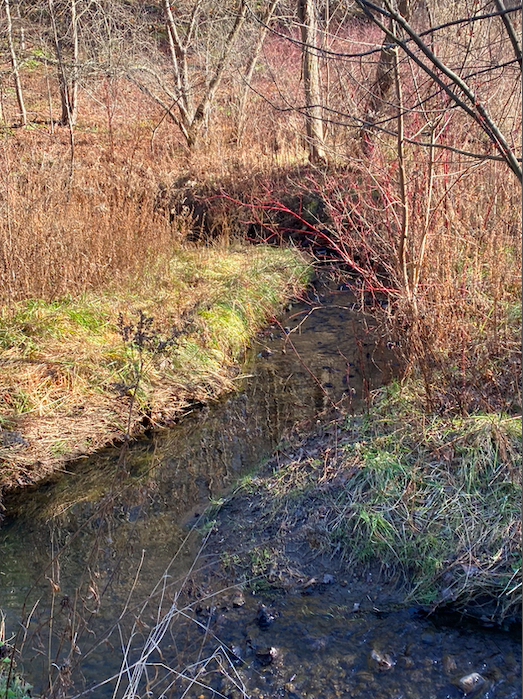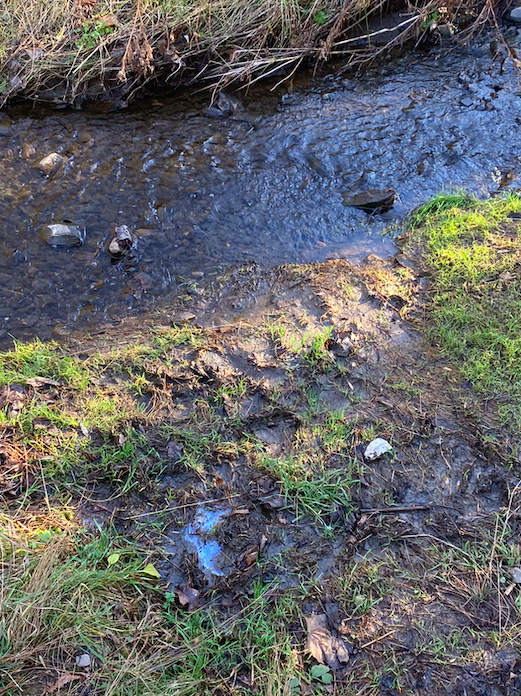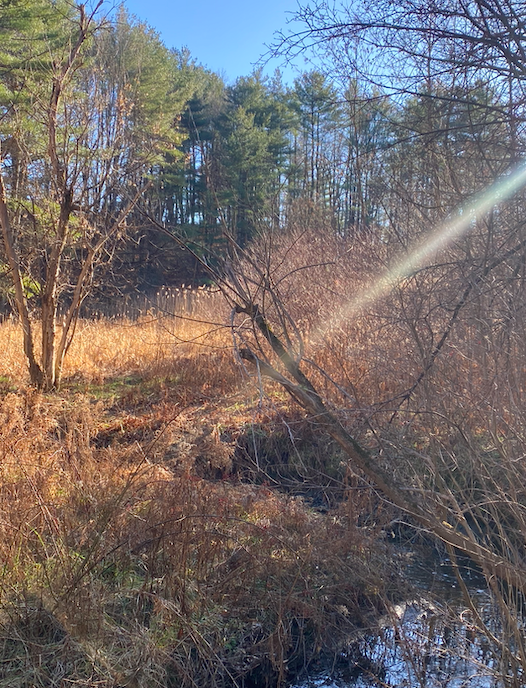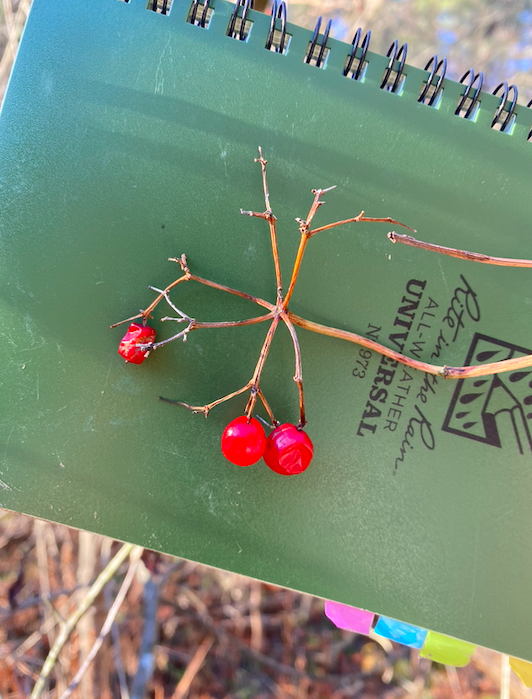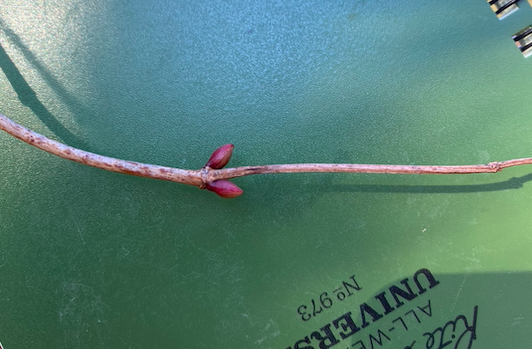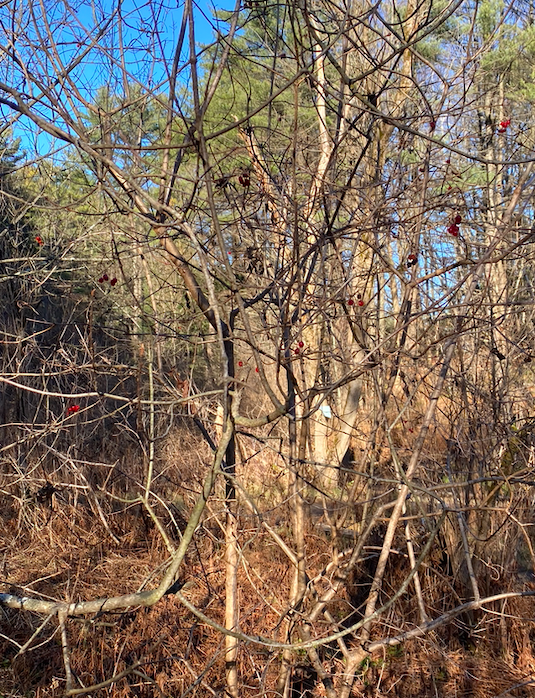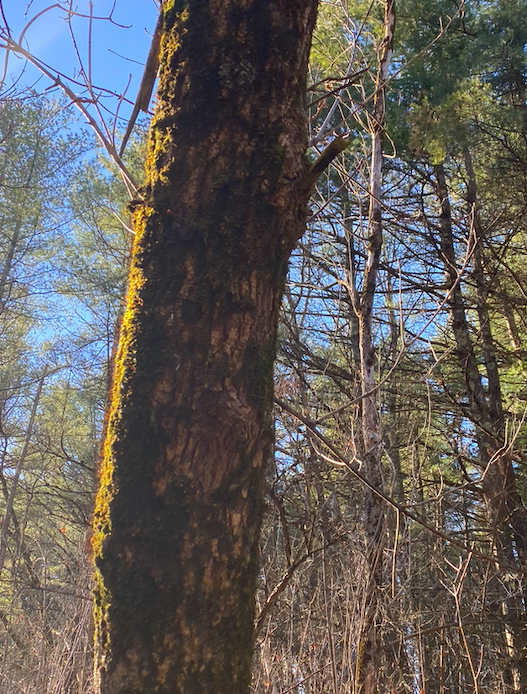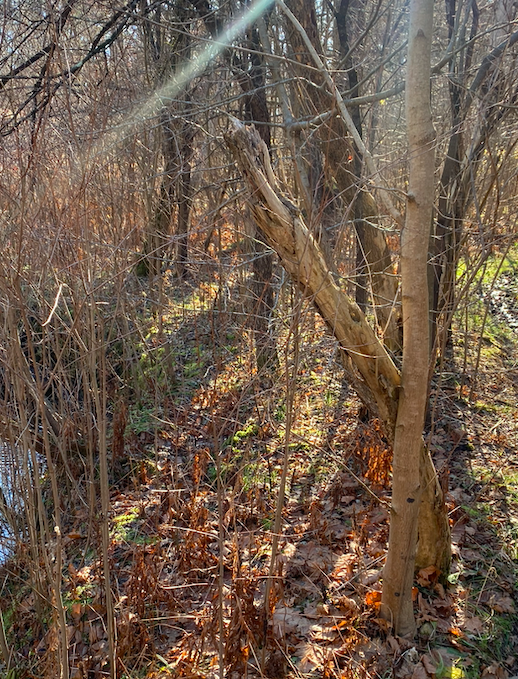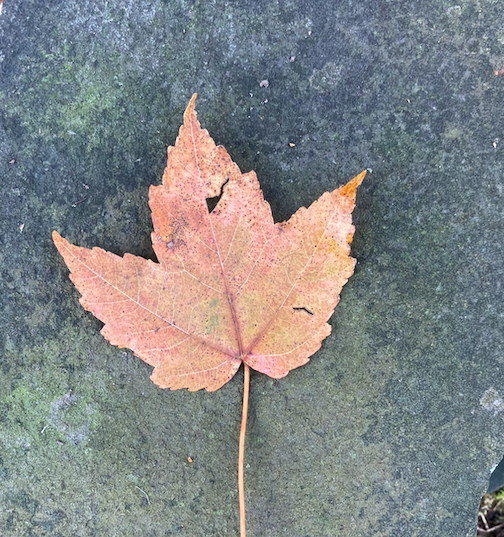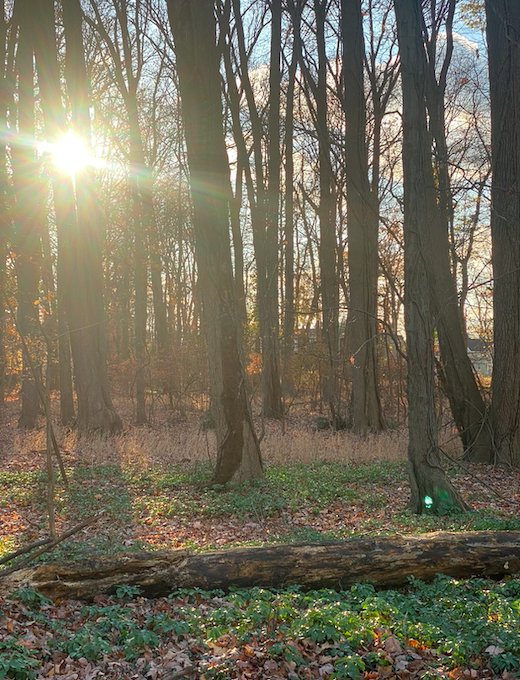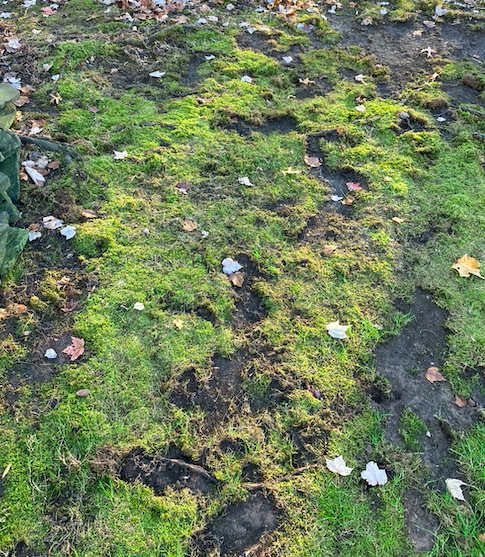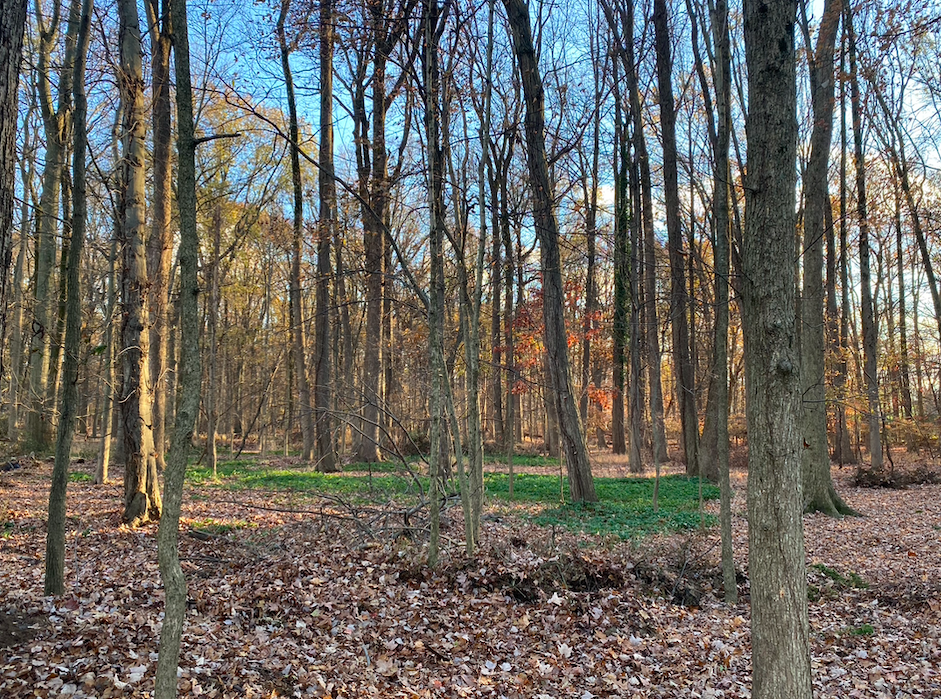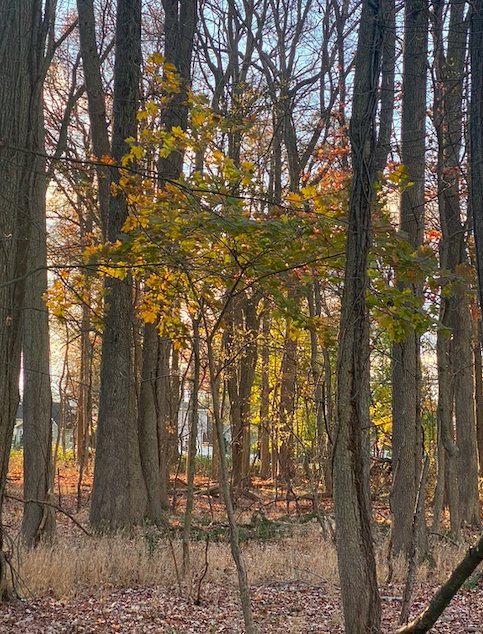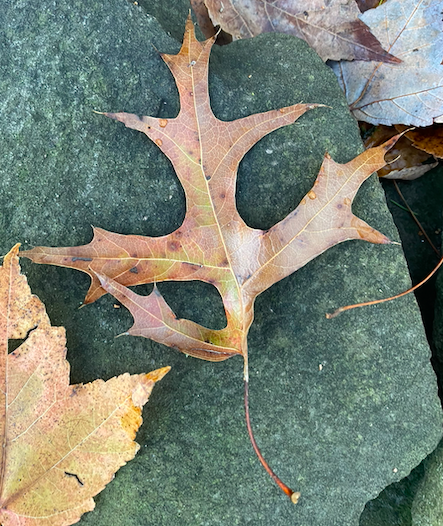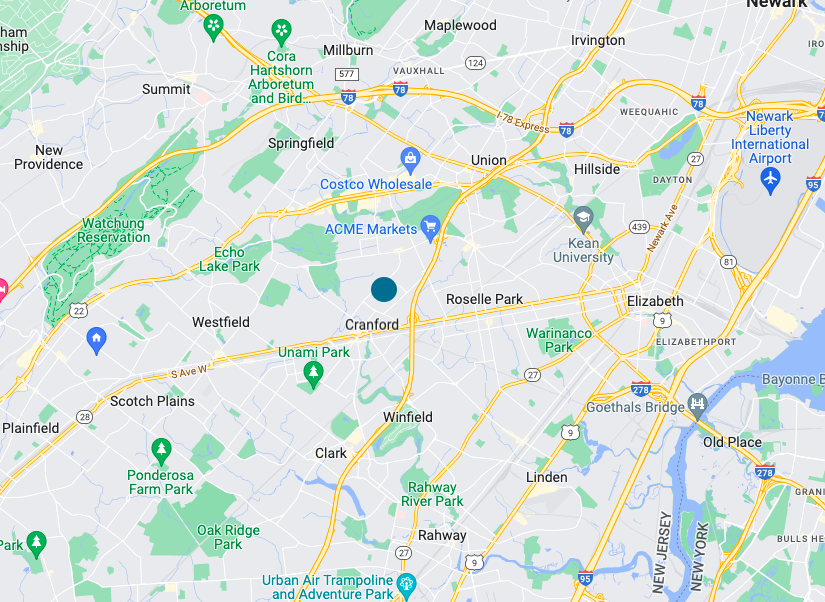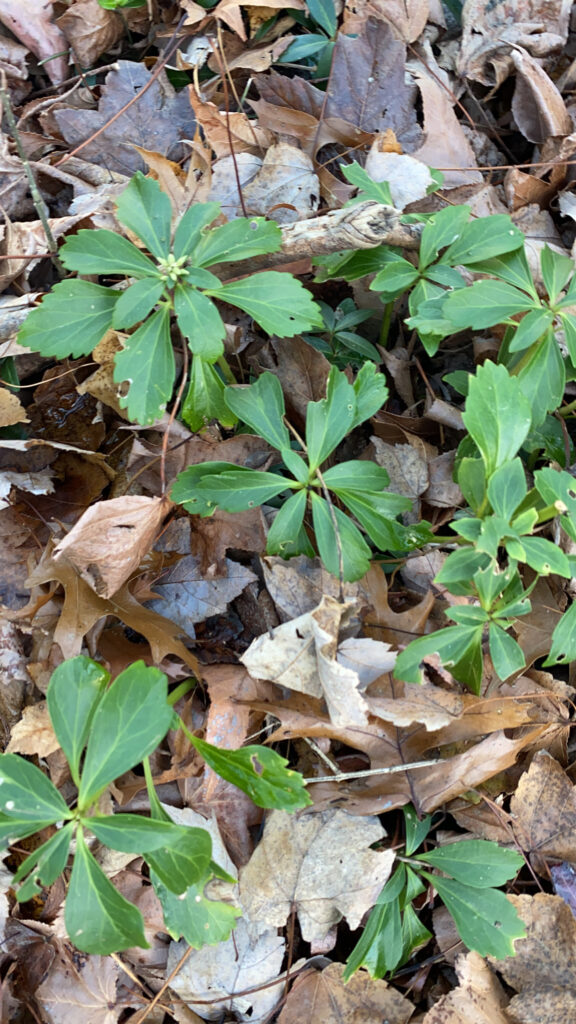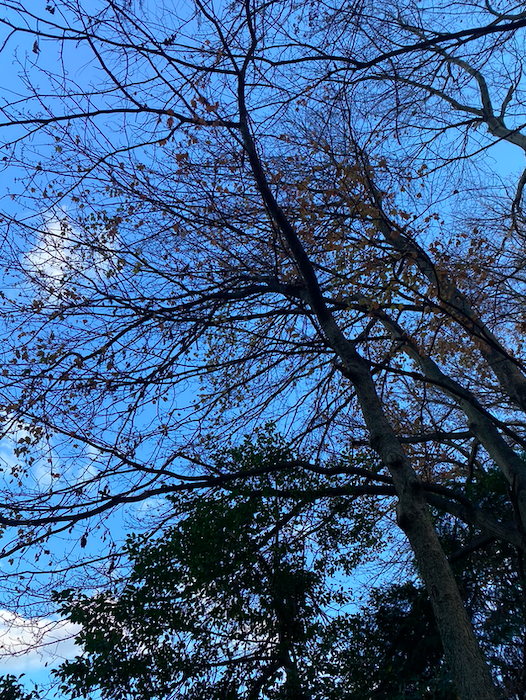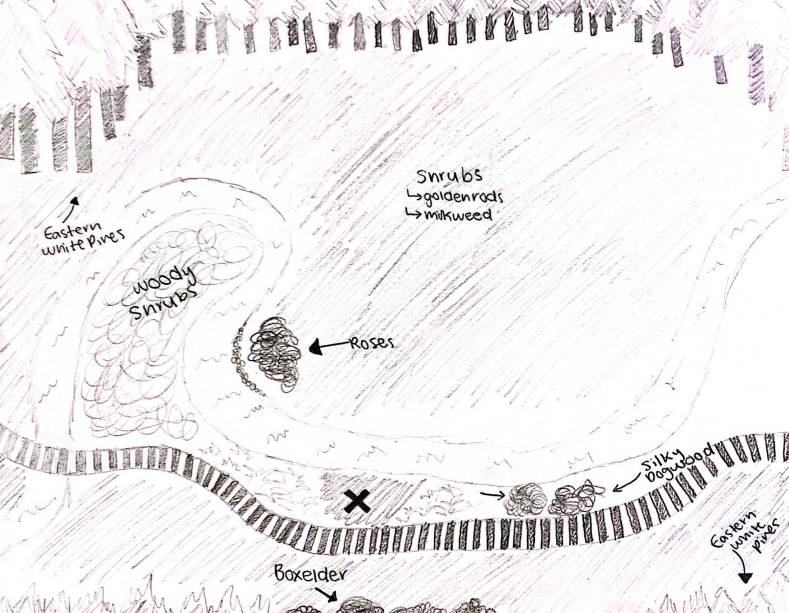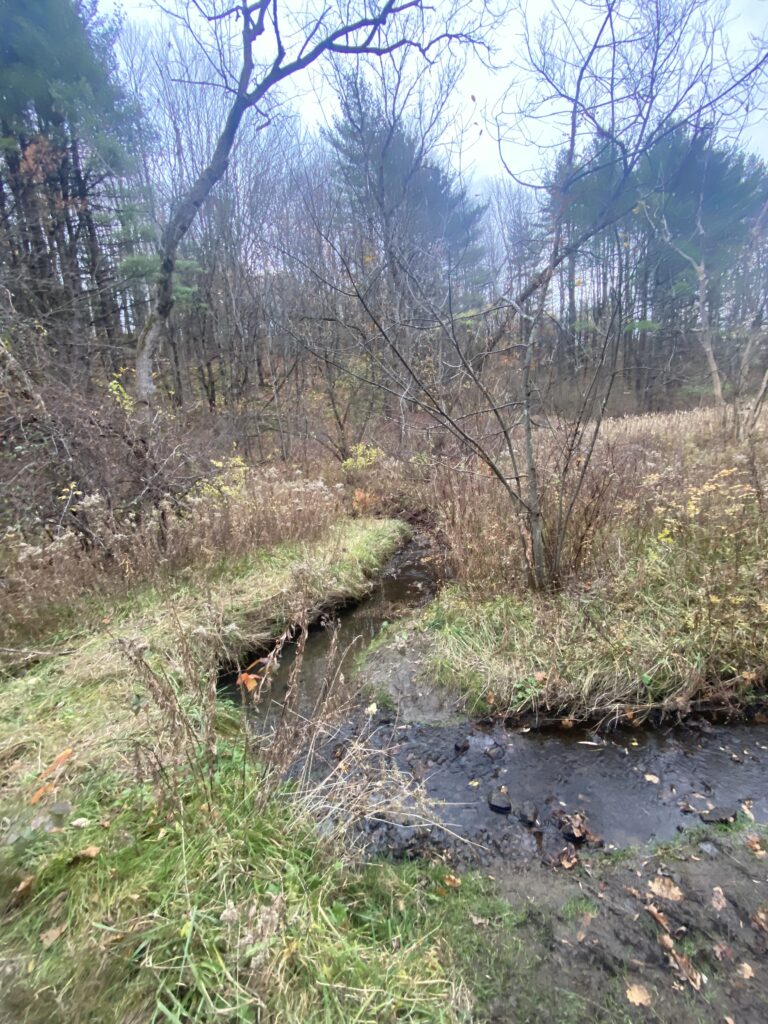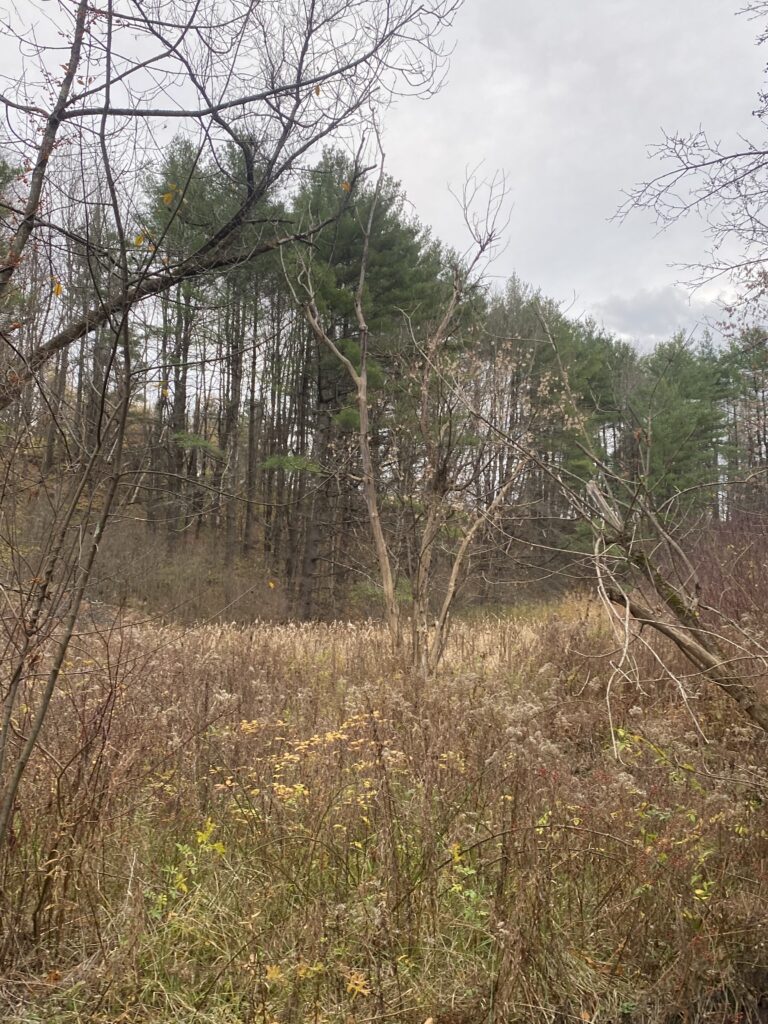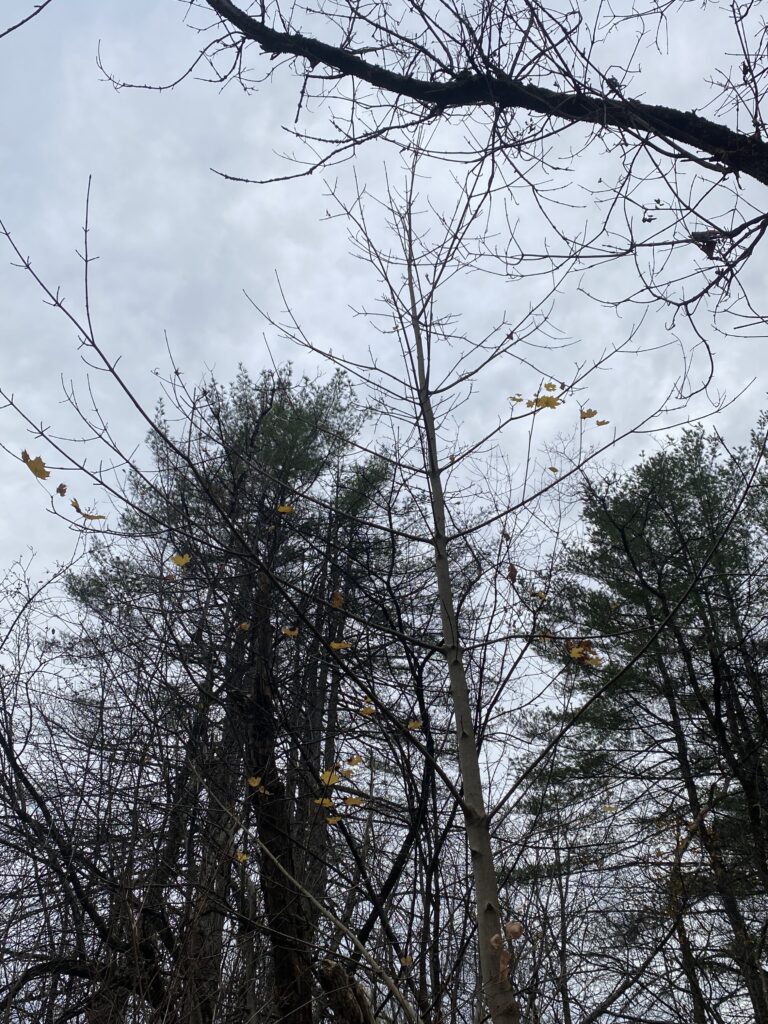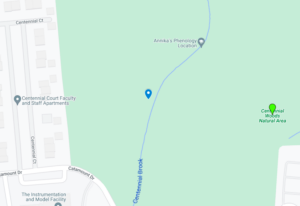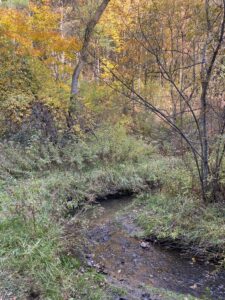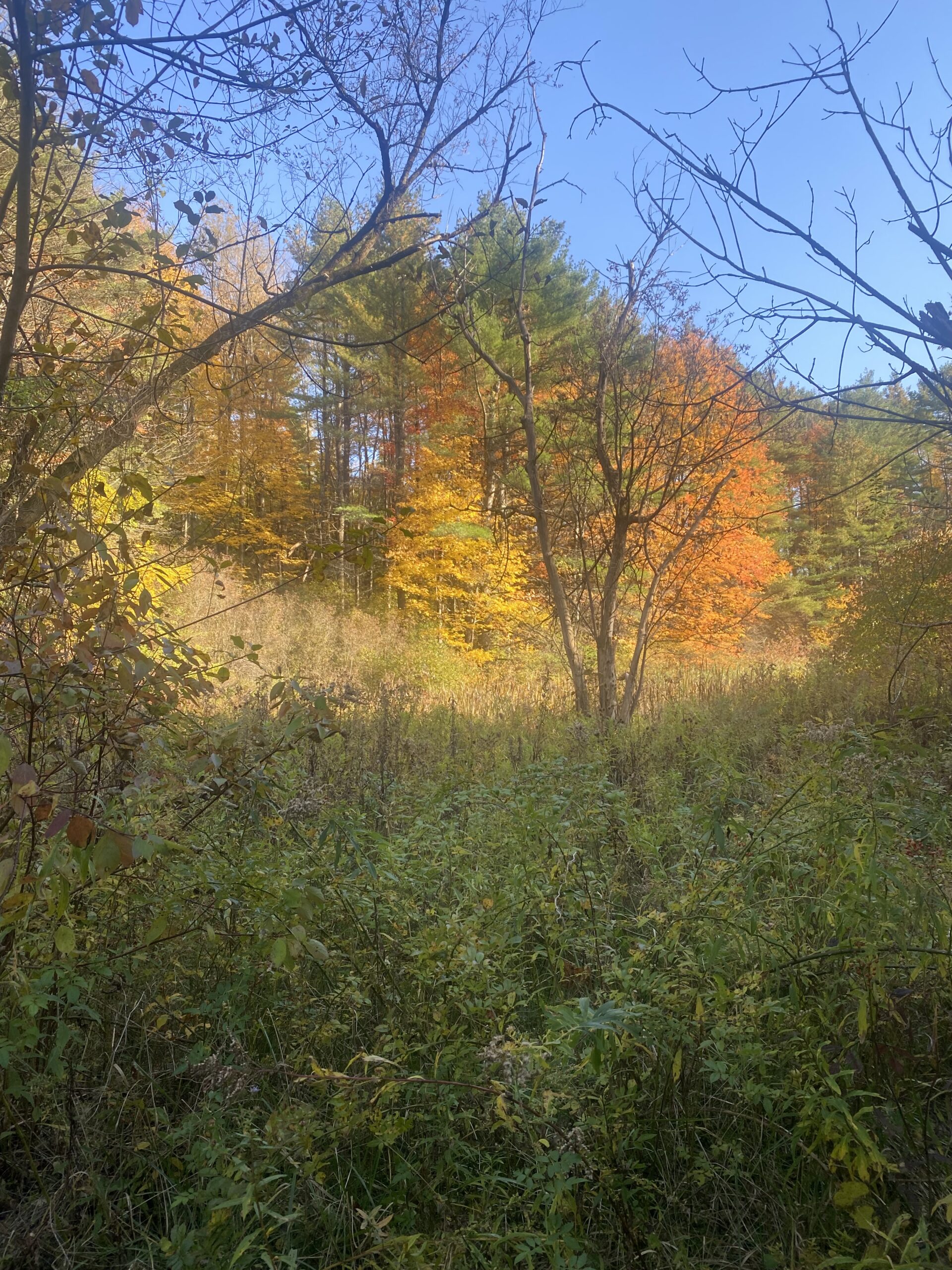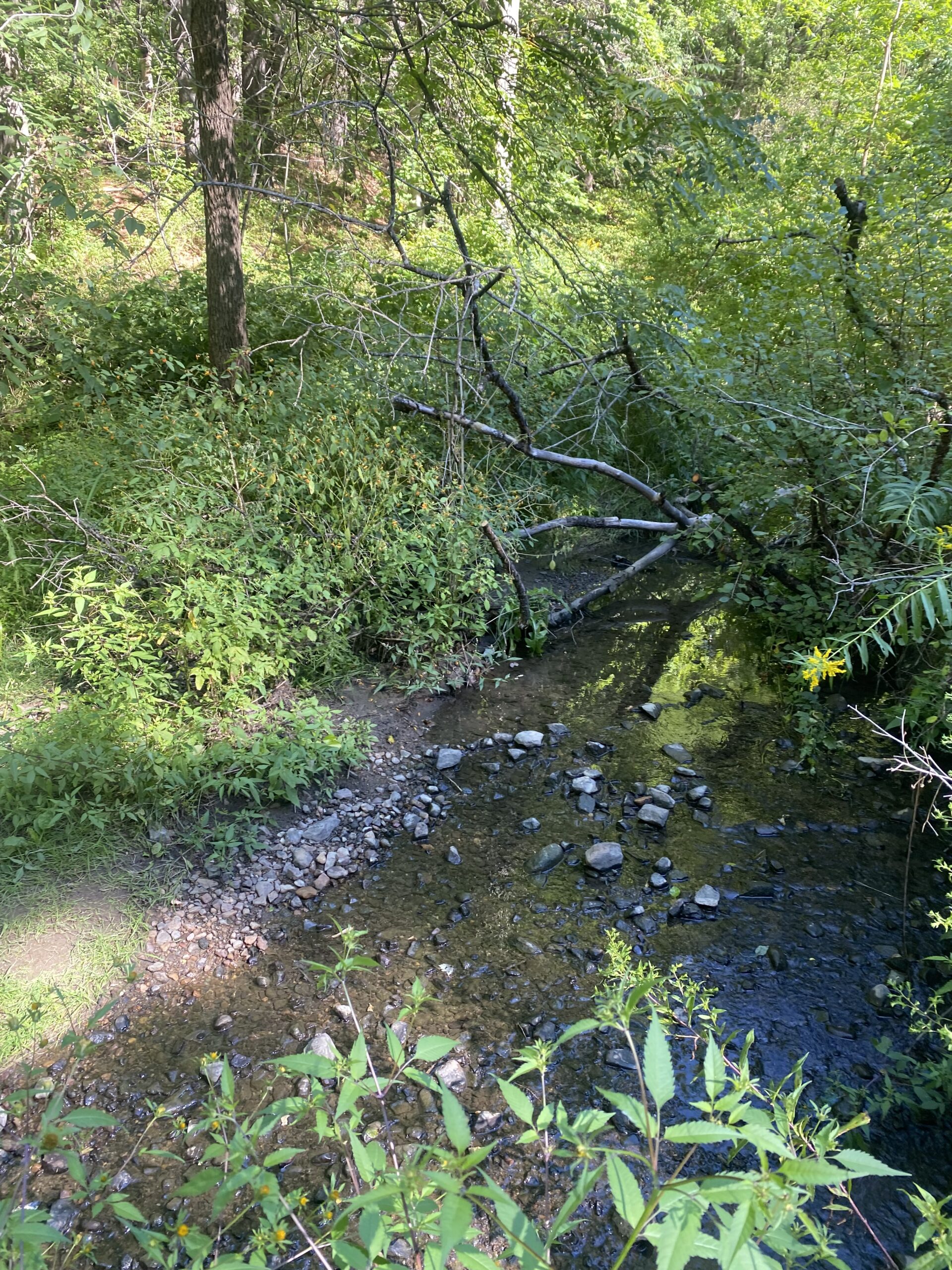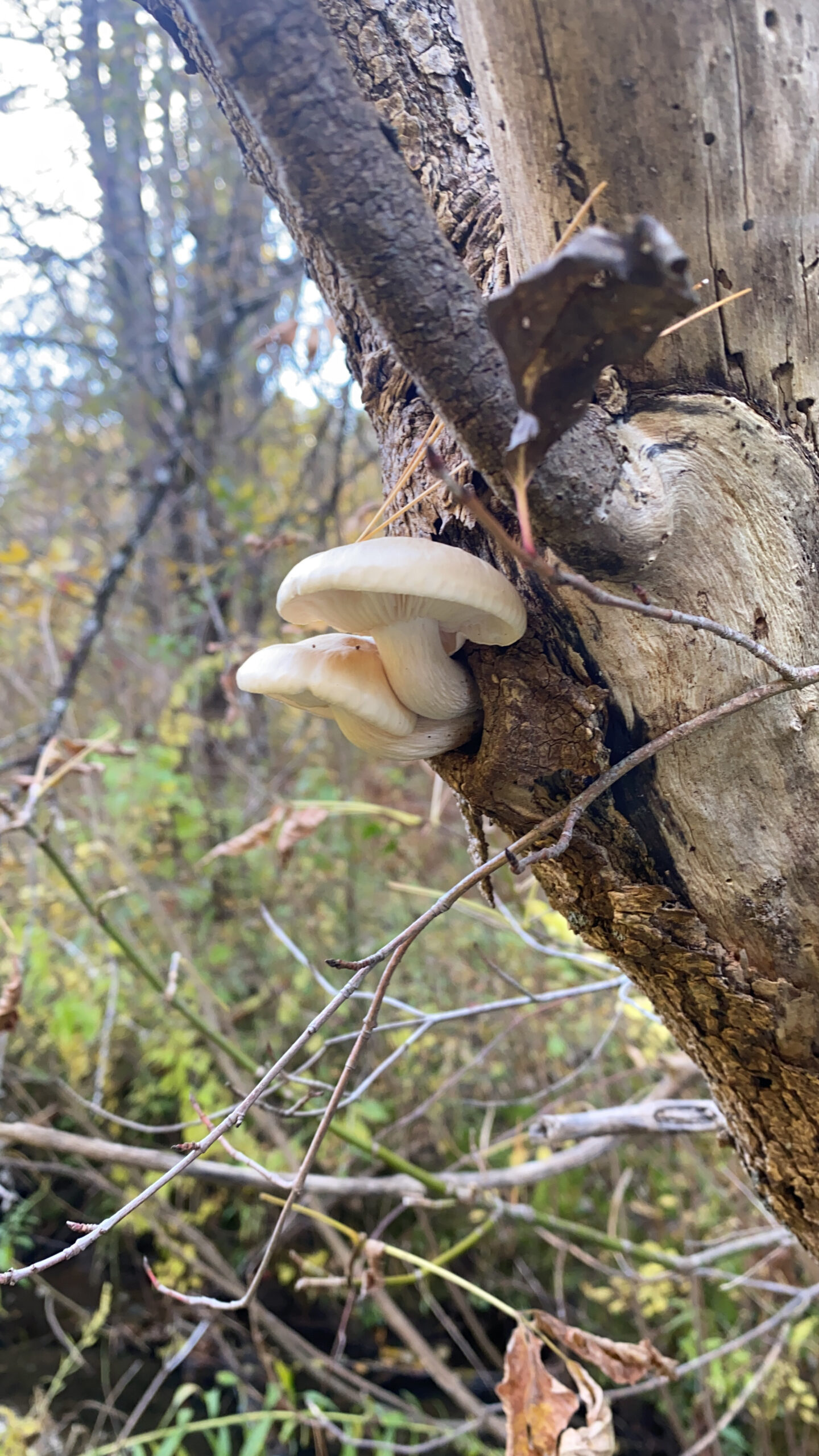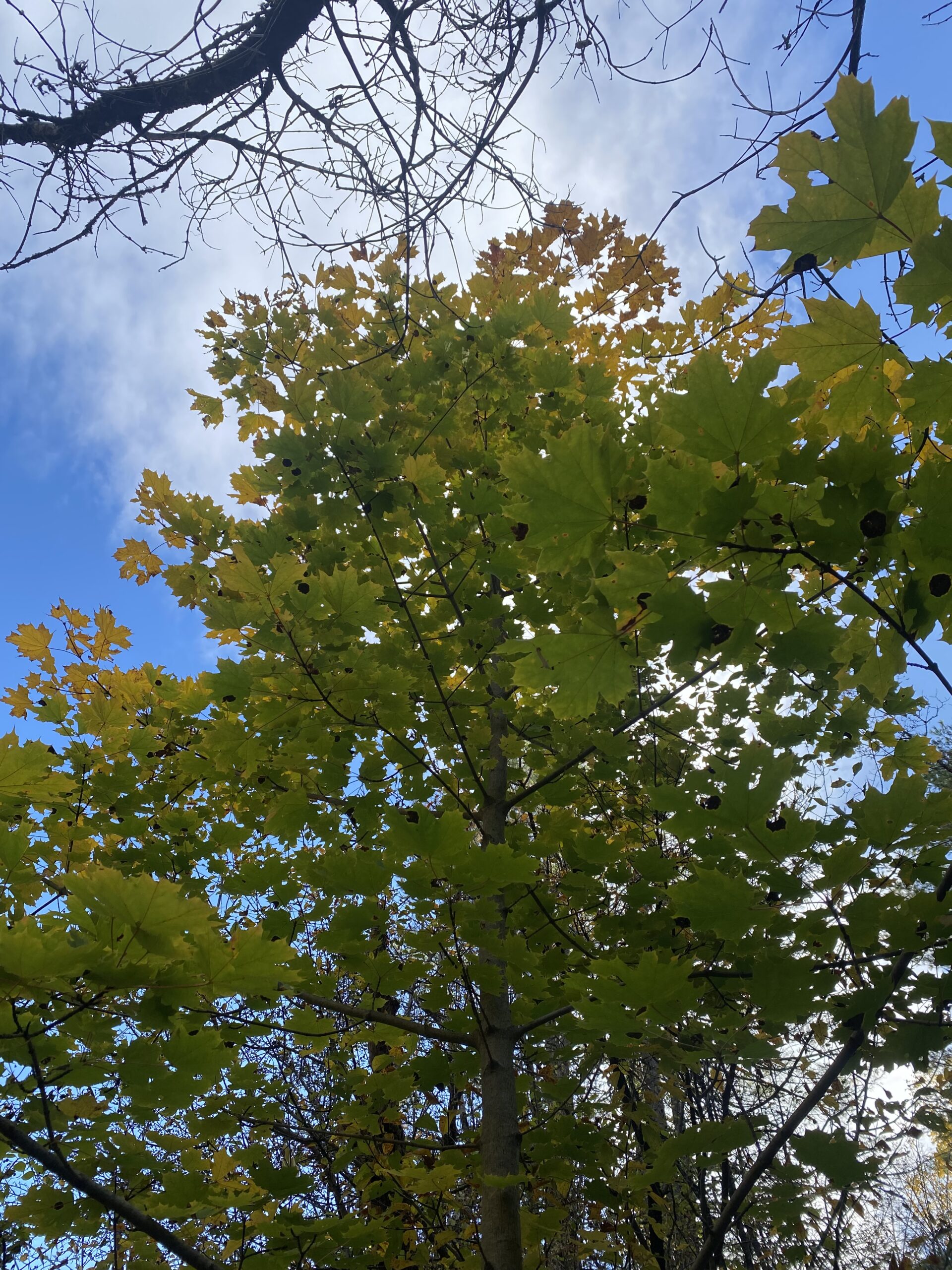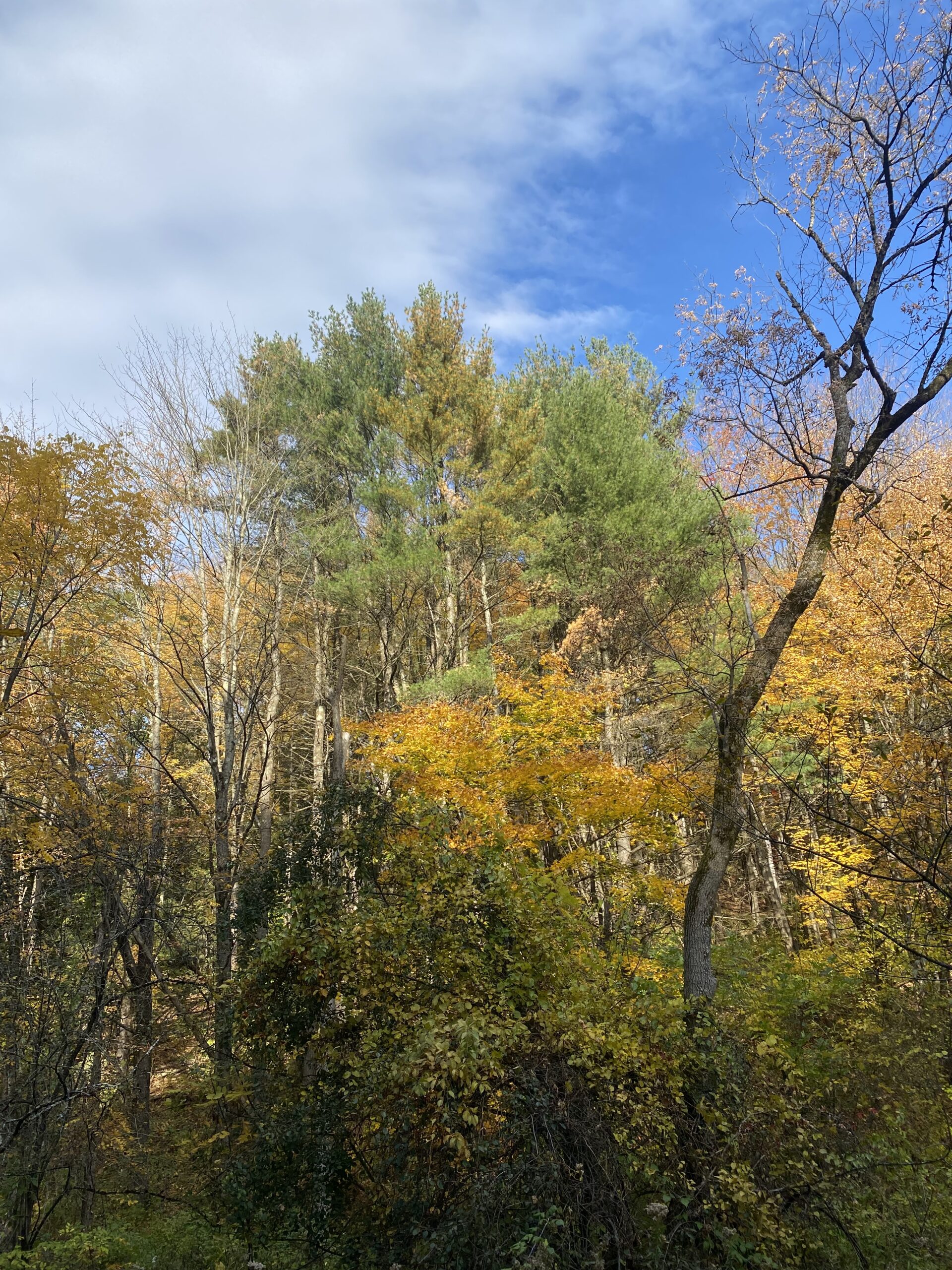Today was such a beautiful day to visit centennial. Based on what I saw I can definitely say spring has sprung for sure. It was so exciting to be in the wood since its been getting greener. As lovely as my first Vermont winter has been, everything feels brighter, lighter, and more welcoming. I saw my first fiddles heads and tons of wildflowers. Needless to say I am happy to have gone before I head home.
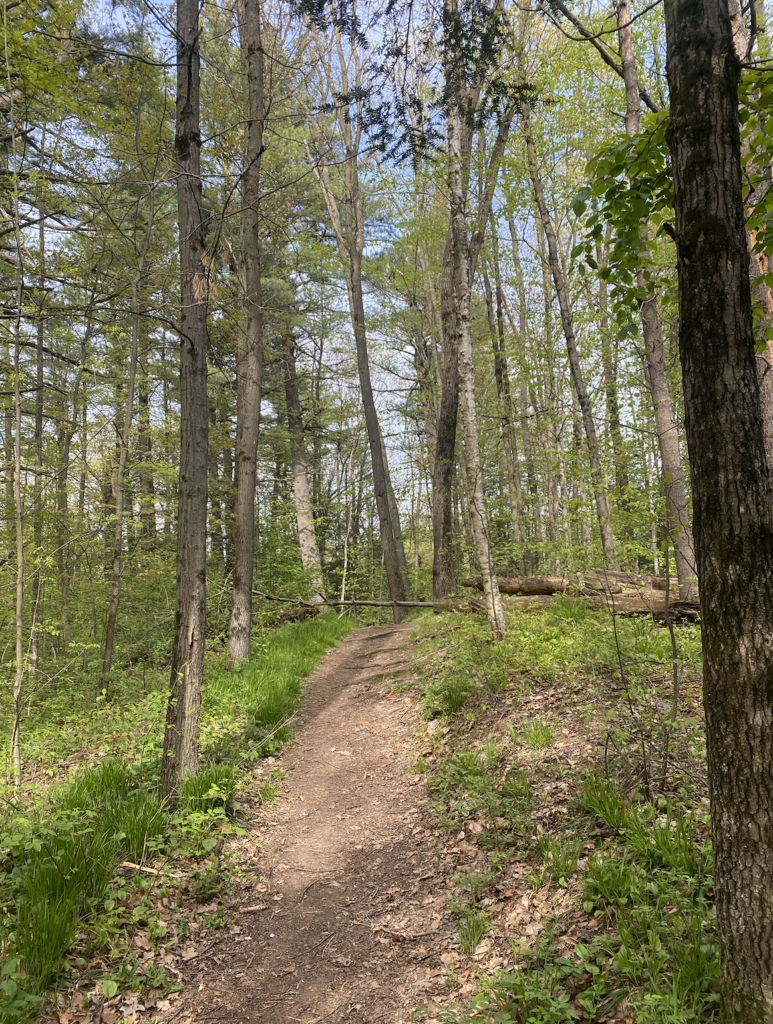
My site is just as beautiful as ever despite the treacherous hill I need to conquer before I get there. I got to walk past the flowing stream, the wildflower path, and the mossy lawn before I got to my spot. Standing as strong and beautiful as ever was my hemlock tree. The same one from my earlier post that is mysteriously cleared around it. Once you get to the tree, you can look to your left and see the extremely tall and thick Eastern Hemlock trees that stand proud, soaking up the newfound sun. It doesn’t seem to have changed too much since I first saw it, there weren’t any downed trees int he immediate vicinity. However, the hemlock seemed a little bit different. I’m not sure if this is new or just something I hadn’t noticed before, but the needles seemed a little wilt-y.
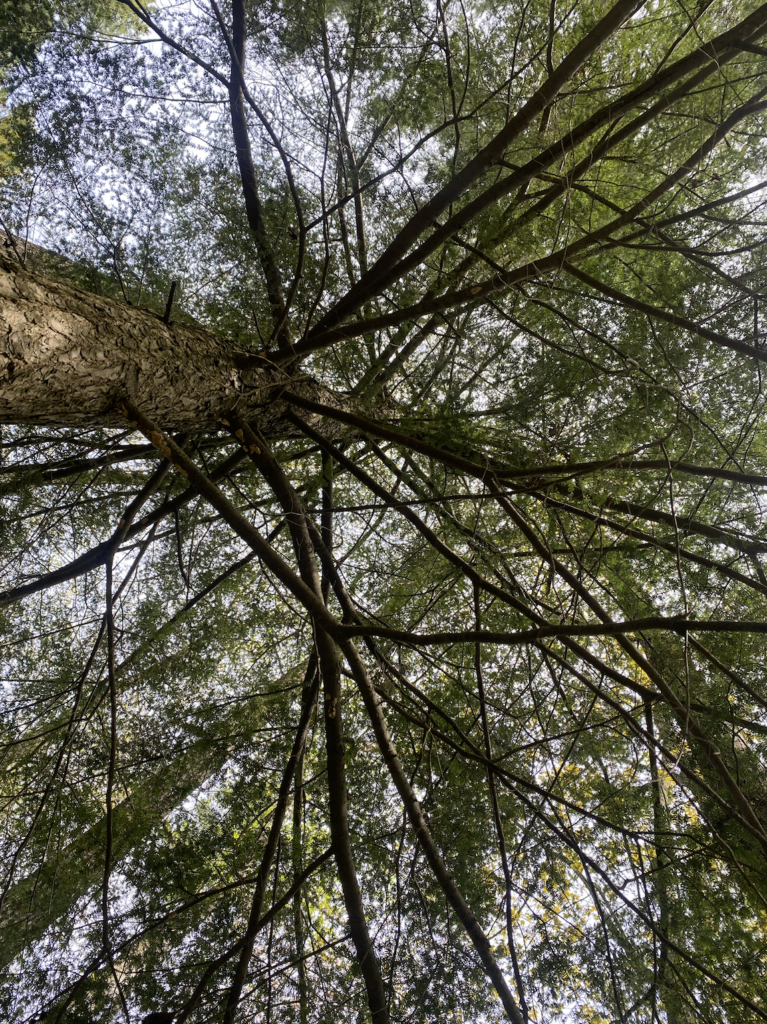
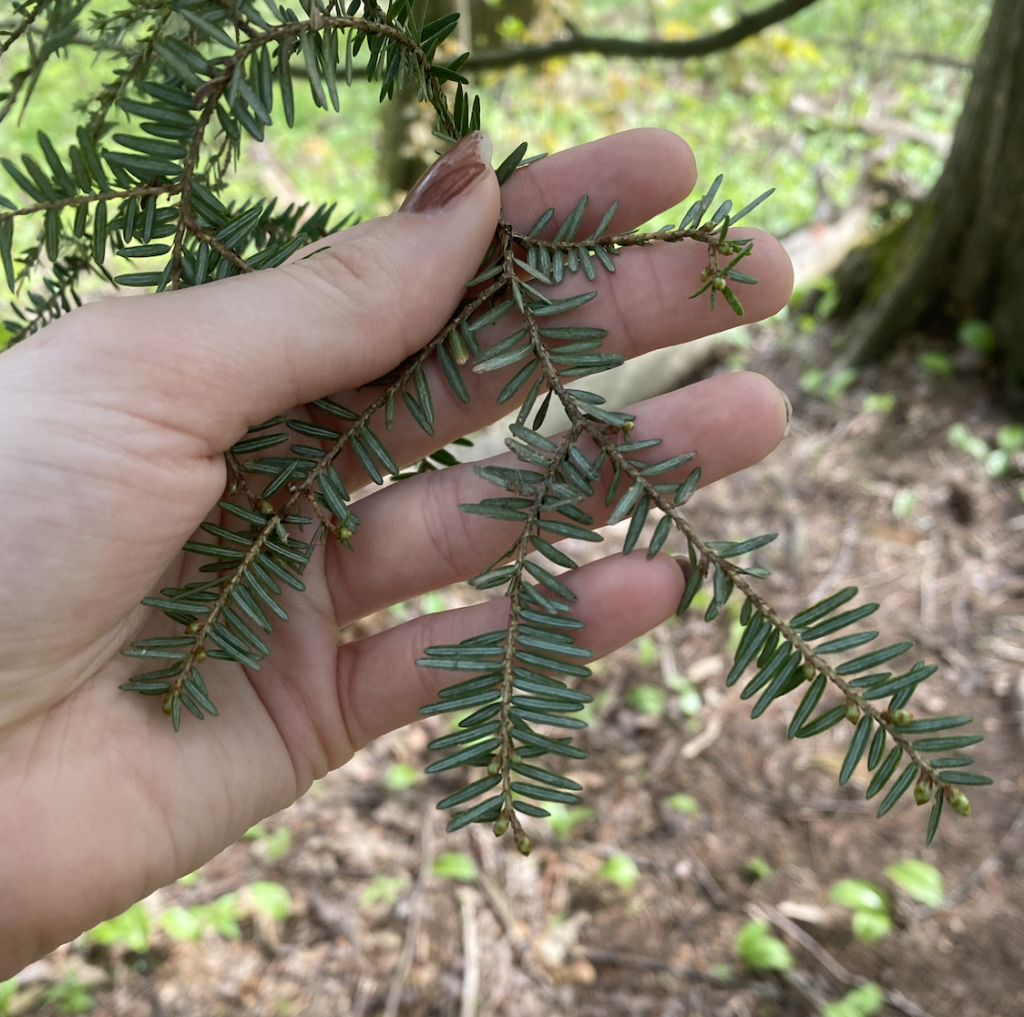
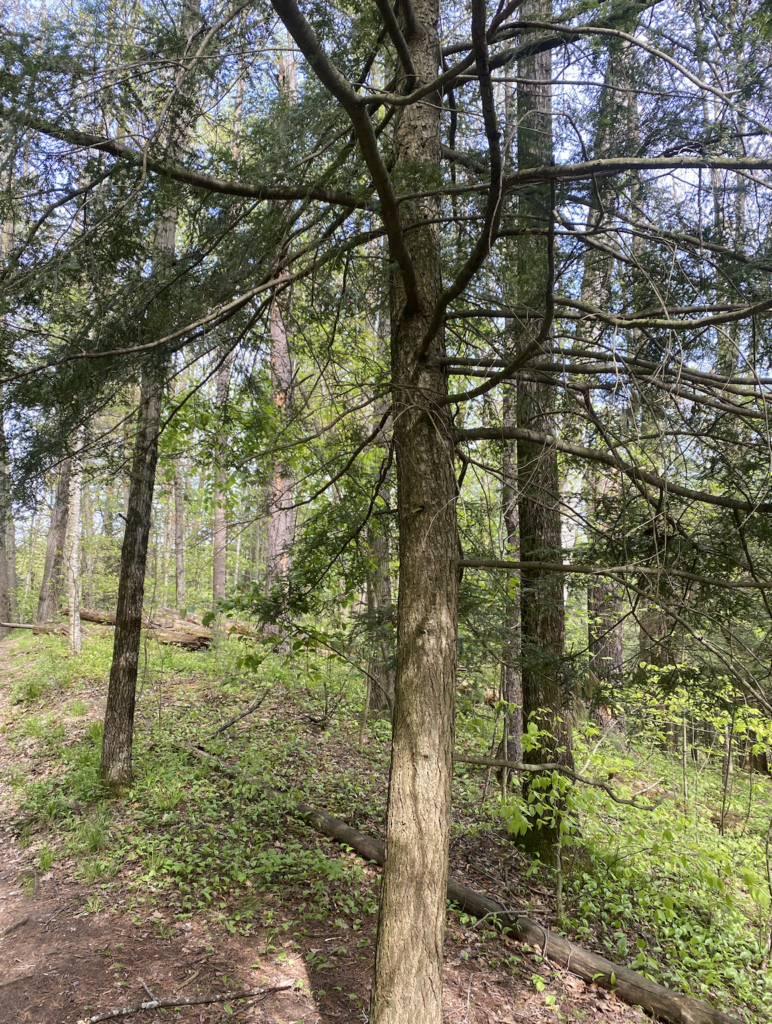
Im not sure if its a detrimental about of foliage damage considering the trees seems like it is still in pretty good condition. I think that nature and culture intertwine here a good amount considering the amount of interaction centennial wood gets from the public. With all of the flora that fills centennial woods, there are a multitude of culture connections. Whether that be the indigenous knowledge knowledge that is deeply rooted in spaces such as this since we are on Abenaki land. Additionally there are connections with a lot of the plants that I have been able to see first hand. For example, fiddle heads are a food commonly prepared and it has been fascinating to see how commonly it grows here in Vermont. Additionally, having centennial woods in the backyard of UVM has been a means of giving college kids opportunities to connect with nature as well as learn about the cultural history between UVM and centennial.
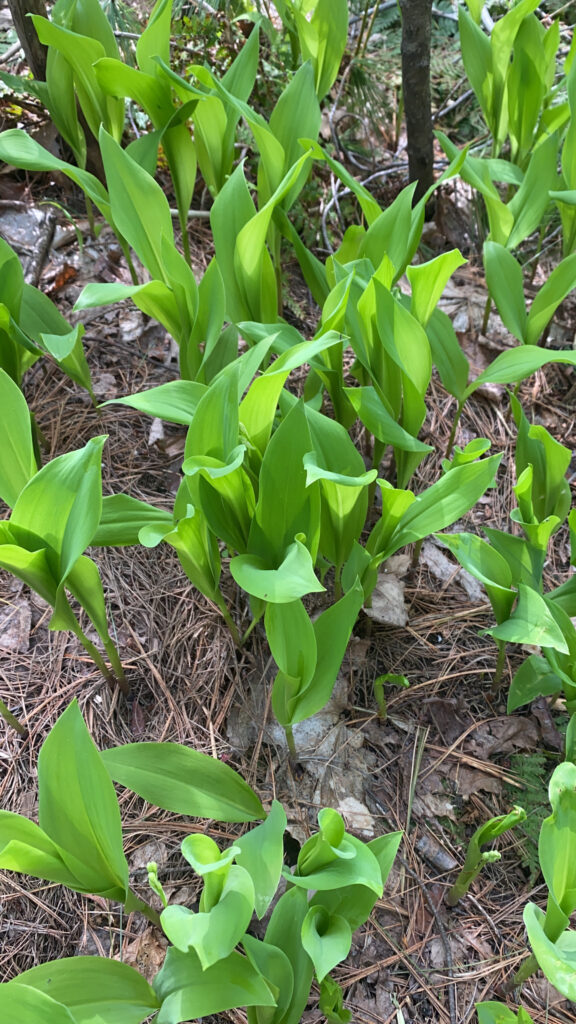
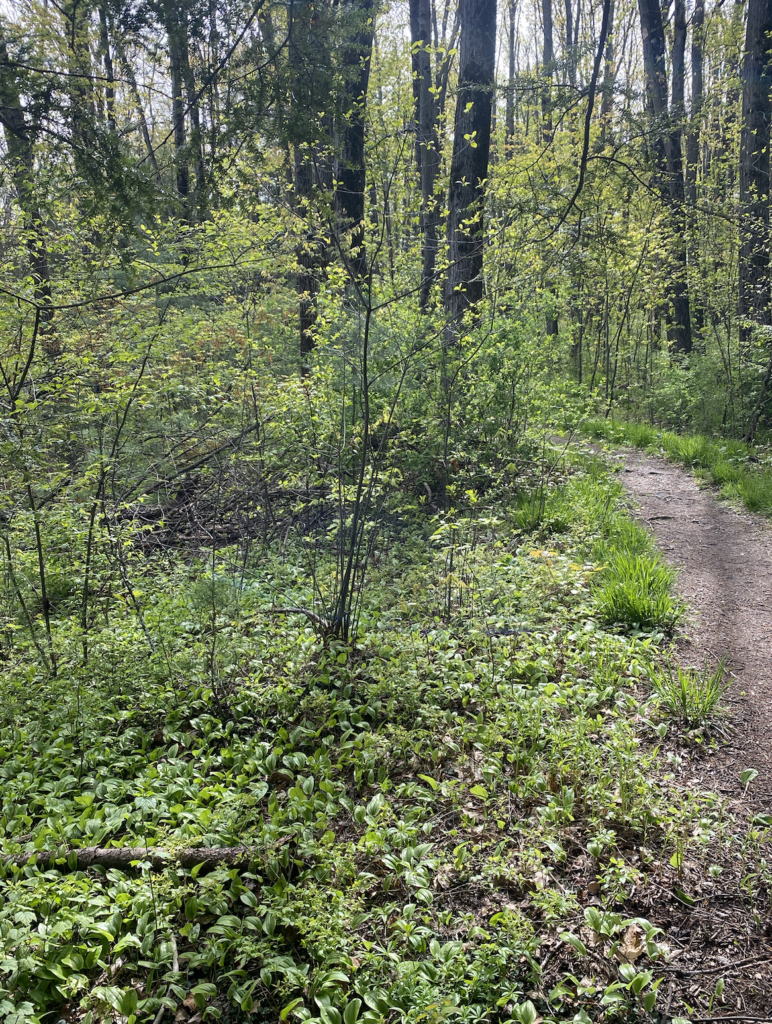
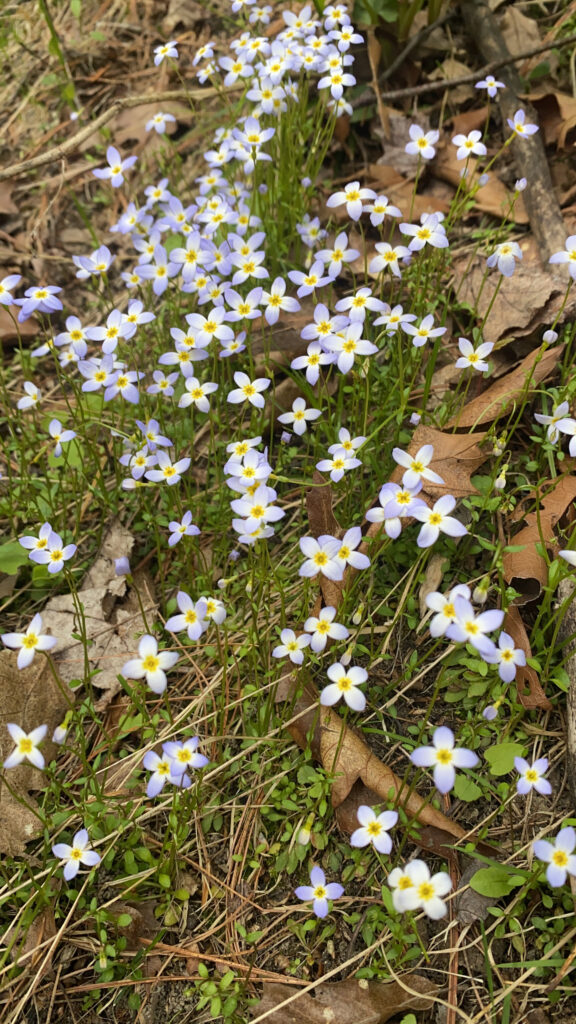
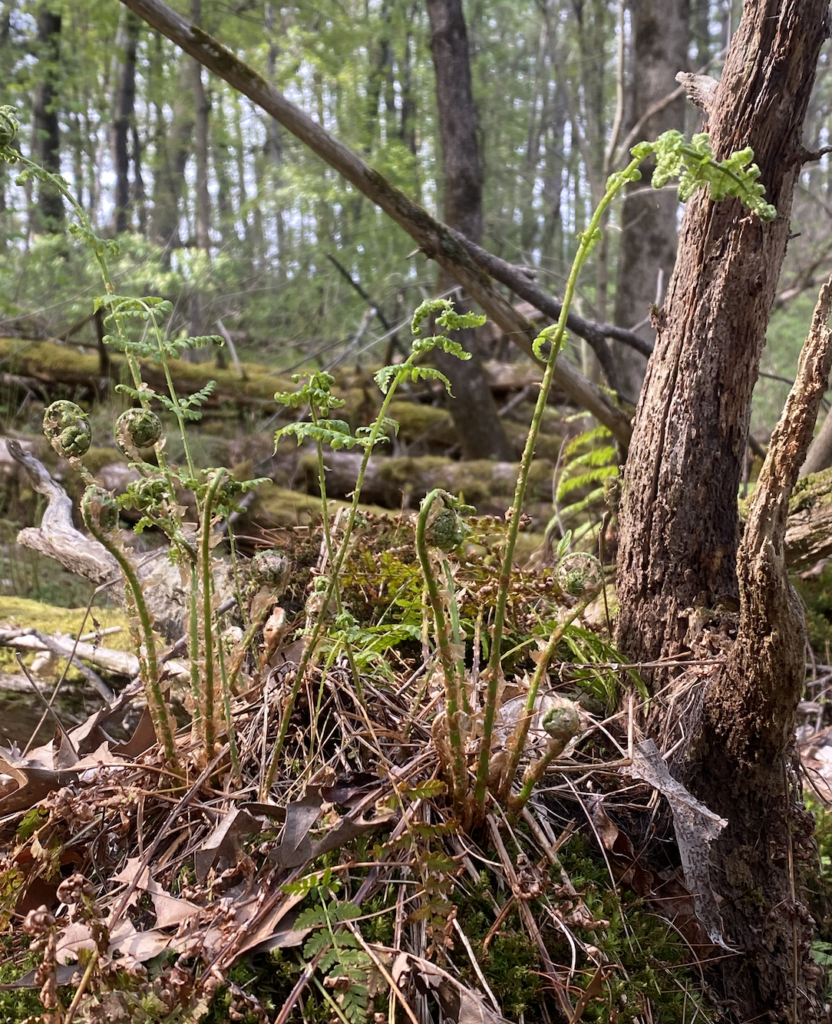
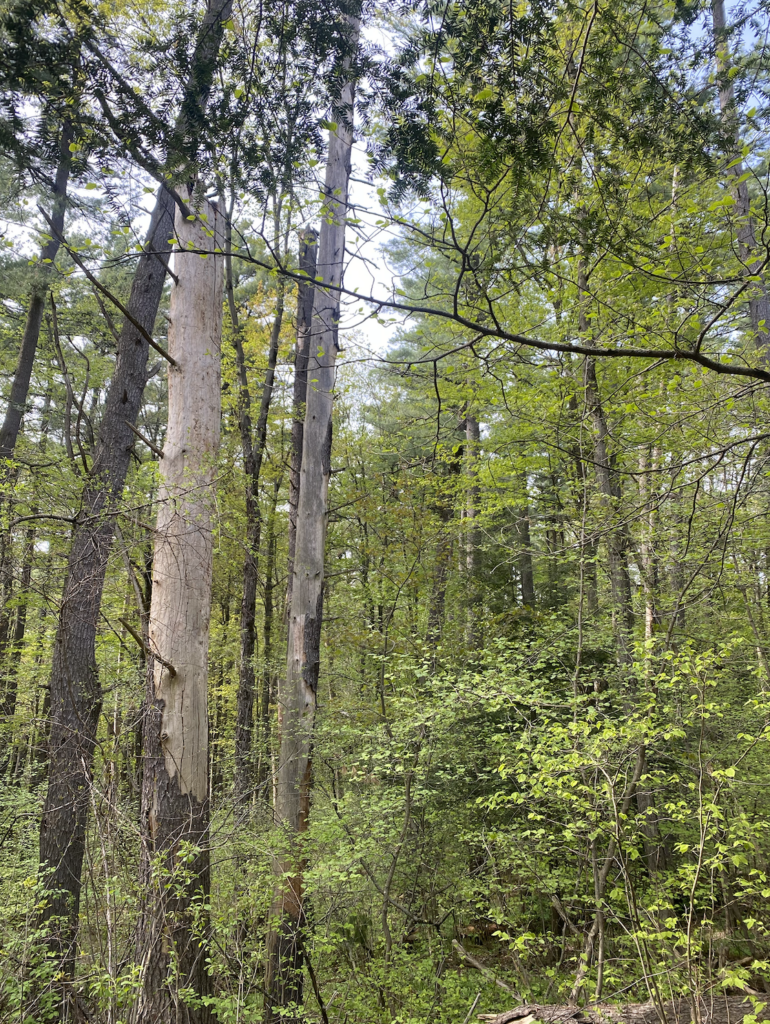
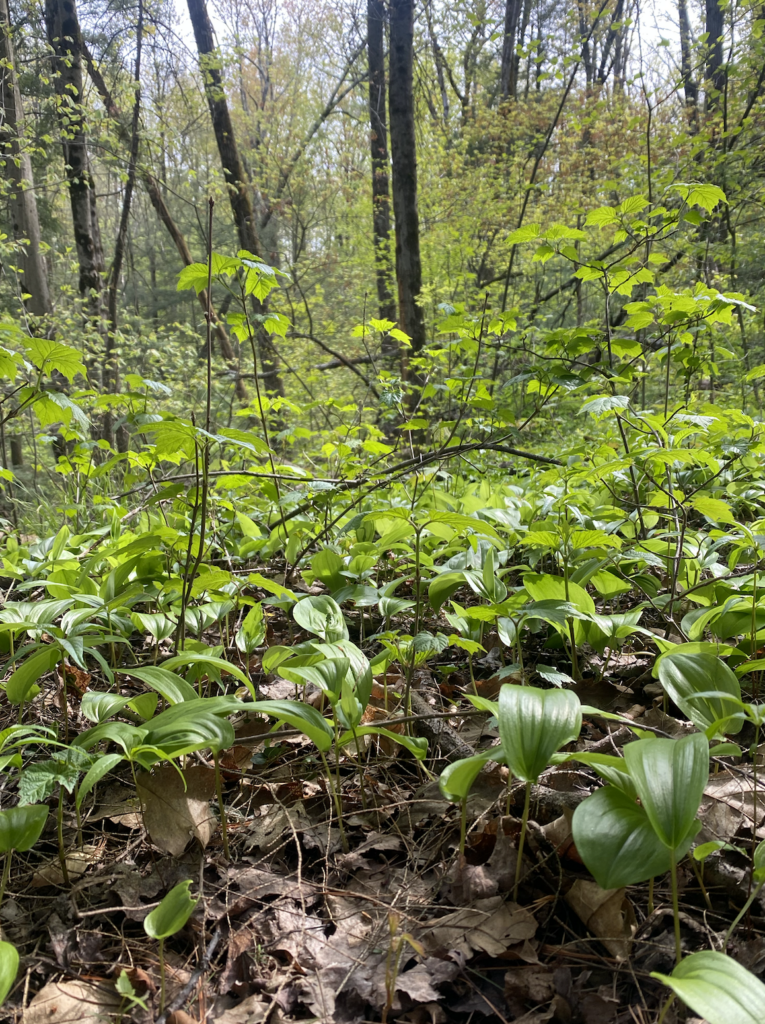
I would consider myself a part of centennial woods. I feel like what really ties me to this land is not my proximity or my love for nature. But rather the knowledge I have gained of this land. Taking the time to learn about a place and all of the systems within it has built the connection up. From revisiting this spot time and time again, I have come to learn about its makeup, its inhabitants, and its phenological processes. This knowledge and in turn appreciation has bound me to this land. This is a connection I encourage everyone who can to establish with this whole different world that is so close to campus.
